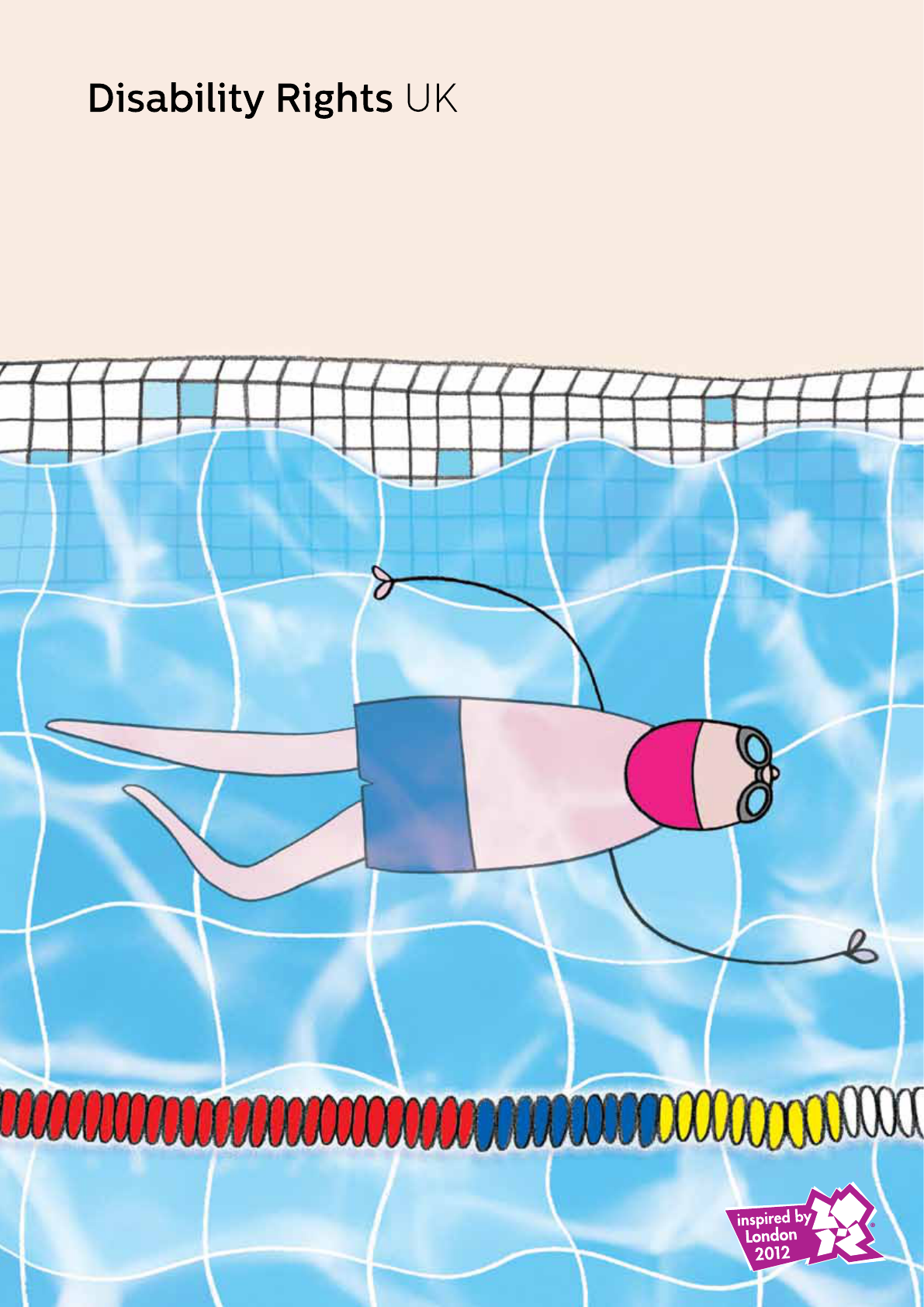
A guide to exercise and fitness for people
living with disability or health conditions
Doing Sport Differently
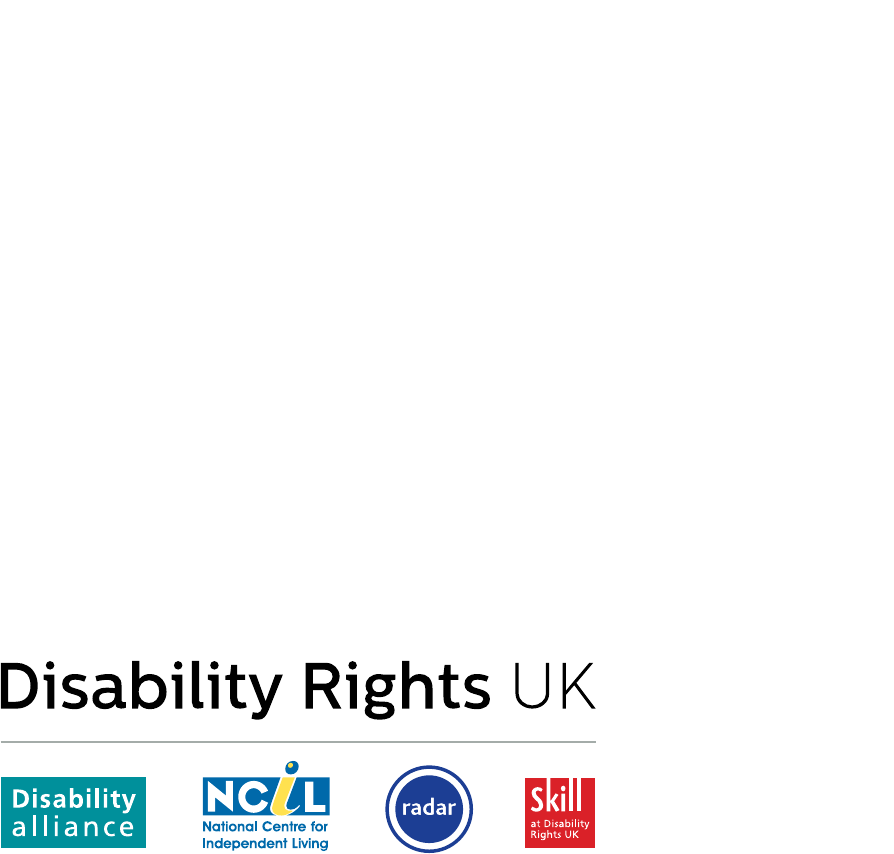

3
How to use this guide
This guide is aimed at people with
lived experience of disability or health
conditions and at those advising or
working with us. A question and answer
approach enables different people with
different interests and objectives to dip
into this guide in different ways. Doing
Sport Differently will show you how far
access to sport, exercise and fitness has
improved and how to enjoy it.
Doing Sport Differently
Where should I start?
If you’re not sure you can do sport or
take exercise for whatever reason, go
to section one.
If you want to do sport or take more
exercise but don’t know what you
want to do, go to section two.
If you want to get involved in
refereeing, coaching or activities off
the pitch on either a paid or voluntary
basis, go to section three.
If you want to find out more about
watching sport, go to section four.
If you’re looking for websites and
organisations to help with any of the
above, go to section five.
A guide to exercise and fitness for people living
with disability or health conditions
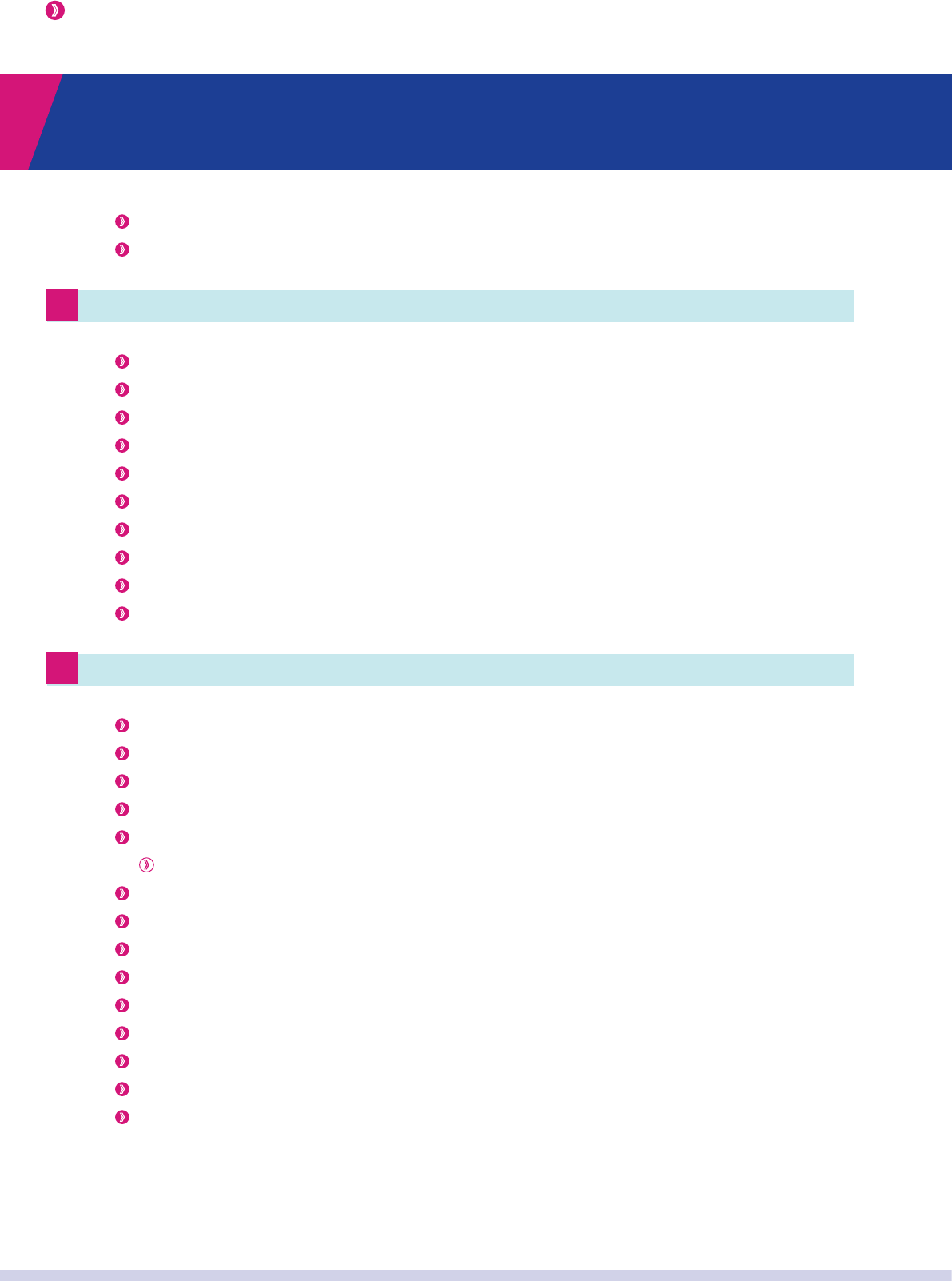
4
Doing Sport Differently
A guide to exercise and fitness for people living with disability or health conditions
Contents
Foreword – Baroness Grey-Thompson DBE 6
Foreword – Peter Ayliffe, President and CEO, Visa Europe 7
1: Why do sport? 8
The benefits of exercise 8
I can’t get fit and healthy, I’m disabled 8
Do there have to be winners and losers in sport? 12
What are the benefits of keeping your body as fit and healthy as you can? 12
How much exercise do I need to take? 14
That’s far too strenuous for me 15
But I haven’t exercised for years 15
But I hate sport 16
What are the types of fitness? 16
I’m a parent. What can I do? 17
2: Taking Part 18
I don’t know what to do 18
Walking 20
Cycling 21
Running 22
Exercise – at the gym or at home 22
How do I choose a gym? 24
Swimming 27
Adapted sports 28
Paralympic sport 28
Other Sports 32
What do I need? 35
Can I really access sports facilities on the same basis as everyone else? 35
Can a sports club turn me down for membership? 38
I’m newly disabled. How do I stay in sport? 39
Where do I find out more? 40
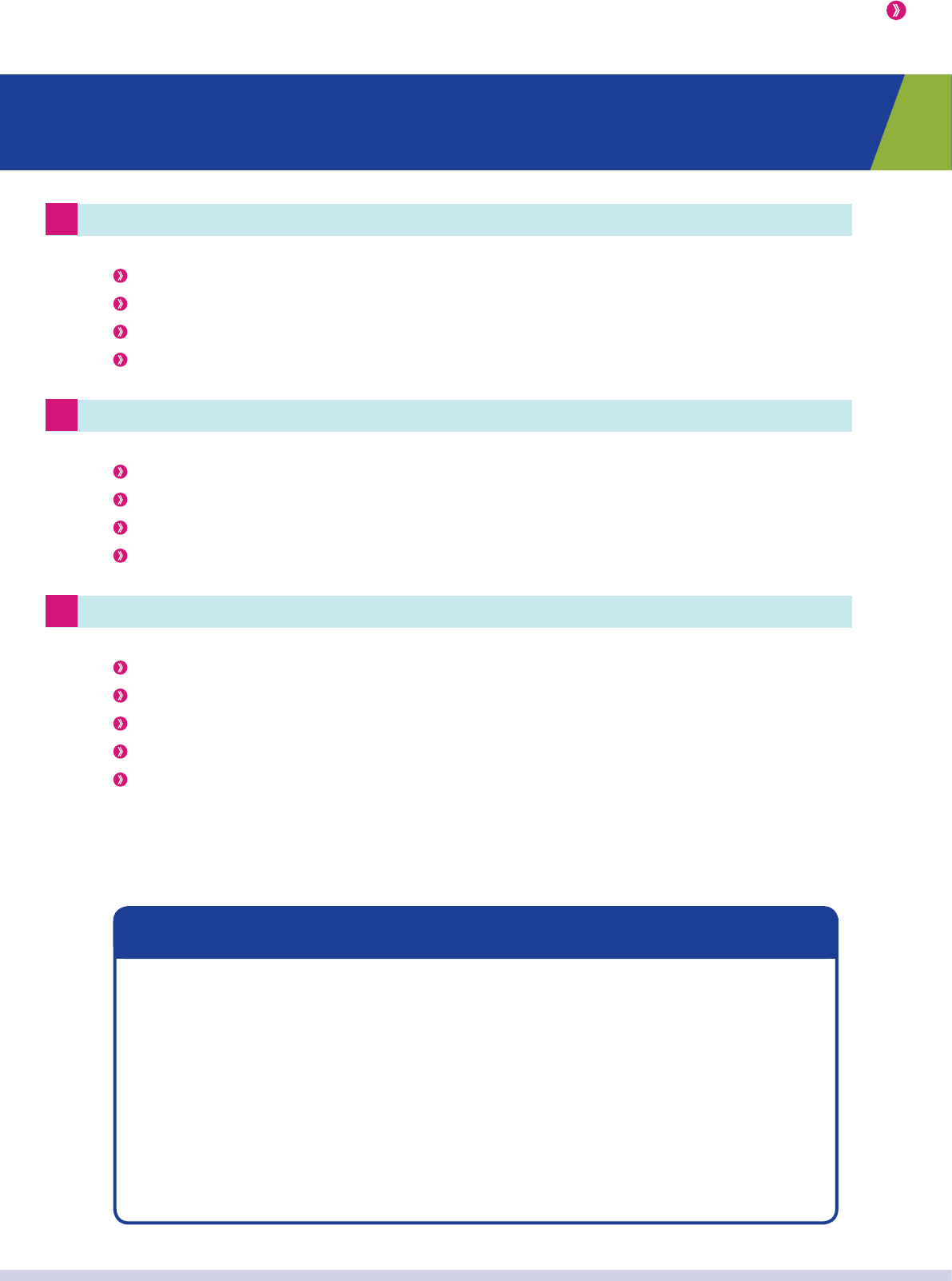
5
Doing Sport Differently
A guide to exercise and fitness for people living with disability or health conditions
Contents
3: On the touchline 43
Could I have a career in sport? 43
What about volunteering? 44
What can I do? 45
How do I get involved? 48
4: Watching 51
How do I know if my team’s ground is accessible? 52
How can I help my club do better on access? 53
Can I be turned away? 56
Could a club with a non-accessible ground be taken to court? 56
5: Who can help? 58
General starting points 58
Other useful general websites 59
Organisations for particular sports 60
Organisations for people with particular impairments 61
Spectating 62
Doing Sport Differently is for everyone with lived experience of disability
or health conditions. In the everyday language of Disability Rights UK, we
don’t make big distinctions between different types of conditions. However,
Paralympic sport does categorise and classify athletes according to their
impairment and its impact so the language some organisations use may not
be the same as ours, for example ’intellectual disability’, which we would
normally call a learning difficulty or learning disability. If you’re not sure whether
something we talk about here is for you, just ask the organisation concerned.
›› A note on terminology

6
Doing Sport Differently
A guide to exercise and fitness for people living with disability or health conditions
You may find this hard to believe but I know exactly what
it’s like to find exercise daunting – to not know what to do or
how best to do it.
I love sport. Paralympics, world championships, and
world records were my life for many years. But after my
retirement in 2007 I didn’t do anything for a year or so and
when I wanted to get active again, I wasn’t quite sure how
to go about it.
I was no longer a professional athlete and needed a
different sort of exercise regime that fitted in with my
new life, interests and levels of fitness. The ideas and
suggestions in this guide and the stories of others’
experiences helped me to think about what I wanted. Just
as you will, I found the right way for me.
Sport and sports facilities are far more accessible to all
than they were when I started racing in the 1980s. Doing
Sport Differently is the first-ever guide to sport written by
disabled people for disabled people designed to enable us
to take full advantage of this.
There is no reason why we shouldn’t get as much out of
sport and exercise as non-disabled people. I am living proof
of that. Whether you’re a beginner or want to compete
internationally, whether you’re a parent of a sports player
or whether you just want to watch sport, Doing Sport
Differently will help you to do it.
Give it a read – especially if you don’t think exercise is for
you. It may change your life.
Tanni won 16 Paralympic
medals (including 11 golds),
16 world championships
medals (five gold), held over
30 world records and won
the London Marathon six
times. She now sits in the
House of Lords as Baroness
Grey-Thompson DBE.
Baroness Grey-Thompson DBE

7
Doing Sport Differently
A guide to exercise and fitness for people living with disability or health conditions
Foreword
When London won the right to host the 2012 Olympic and
Paralympic Games, the bid team promised to create a
sustainable legacy for the UK. In particular, it explained
that the UK population at large would be inspired by sport,
would be motivated to take part in sport – and would have
new opportunities to engage in sport.
As a worldwide sponsor of the Olympic and Paralympic
Games, Visa is helping to bring this legacy to life. It is
important to us that it is extended as far as possible – and,
given our close, long term association with the Paralympic
movement, we want to be certain that disabled people are
part of this.
It was therefore entirely logical and very important for
us to support Doing Sport Differently. We would like to
congratulate Disability Rights UK and Tanni Grey-Thompson
for spearheading the initiative and bringing it to life. This
guide should act as an invaluable source of reference,
encouragement and advice – helping many more disabled
people to seek out sporting opportunities and motivating
them to participate.
The principles of inclusivity and equality matter deeply to
Visa. This is the reason why we became the first global
sponsor of the Paralympic Games back in 2002; it is why
we have supported many other disability rights initiatives
in the meantime; and it is why we work closely with many
Paralympic athletes in our various community support and
outreach activities.
In summary, London 2012 is about much more than a few
weeks of exhilarating competition. It is about the longer
term impact of the Games. I am proud that Visa is able to be
a part of this legacy – through our financial contribution, our
technical expertise, the scale and reach of our marketing
support, and our commitment to the communities in which
we operate.
Visa Europe is a payment
technology company that
makes money flow more
easily, quickly and securely
between consumers,
retailers, businesses and
governments. There are
115 million Visa debit, credit
and commercial cards in
the UK. £1 in every £3 spent
in the UK is now spent on a
Visa card. Across Europe,
there are 445 million Visa
cards and 14% of consumer
spending at point of sale in
Europe is with a Visa card,
and almost 80% of that
is on Visa debit cards. A
not-for-profit membership
association, Visa Europe
is owned and operated by
more than 3,700 European
members. Visa has been
a global Olympic partner
since 1986 and a global
Paralympic partner since
2002.
Peter Ayliffe,
President and CEO, Visa Europe

8
Doing Sport Differently
A guide to exercise and fitness for people living with disability or health conditions
1: Why do sport?
The benefits of exercise
Doing Sport Differently is not just for
the next Tanni Grey-Thompson. It’s not
even for the few who have ever played
competitive sport at any level. It’s for
everyone. When we talk about sport,
exercise and physical activity, we’re
talking about things that everyone can
do – disabled and non-disabled alike. It
needn’t be competitive, it needn’t be
hard work, it just needs to be fun.
If you want to be more physically active
but don’t know how, this is the guide
for you. (It’s also for you if all you want
to do is watch sport – see chapter 4.)
Even if you think you hate sport and
don’t believe that taking more exercise is
beneficial or even possible for you, read
on – you may be surprised.
With London hosting the 2012 Olympic
and Paralympic Games, the idea of
sport for all has never been higher on
the agenda. For people who want to
get active, there have never been more
opportunities than now. You don’t even
need to leave the house.
I can’t get fit and healthy,
I’m disabled
Have a read of some of the personal
stories in this book and you may feel
differently. But meanwhile we need to
define some terms.
I have cerebral palsy and use a
wheelchair. In 2010, I was diagnosed
with the muscle-weakening disease
myopathy. My consultant advised me
not to do any physical activity and
to wait for the inevitable. That didn’t
sound like good advice to me.
I turned to Andrew, a personal trainer
used to working with disabled people.
Thanks to his hard work – and mine – I
can now get up off the floor myself if
I fall out of my chair and don’t have
to wait for help. In fact, I’m now more
mobile than before I had myopathy and
can now walk miles using a walking
frame.
I didn’t have great coordination and
I’d lost all mobility in my legs. I needed
to strengthen them. We started with a
couple of sessions a week of an hour
and a half and now have three of three
hours. I also work-out on my own.
Progress was painful at times and, to
be honest, I thought Andrew was crazy
when he first suggested I walk. But
now I’m planning to walk the London
Marathon with my frame. That shows
you how much I’ve progressed in less
than a year.
SPORT TALK

9
Doing Sport Differently
A guide to exercise and fitness for people living with disability or health conditions
1: Why do sport?
I had a serious bout of depression in
my early 40s and decided to get some
therapy. It helped but it wasn’t enough.
I needed to get out of myself.
I was overweight so I didn’t think I
could just go out jogging. As a child I’d
been a decent swimmer so I decided
to try that. I enjoyed the simple
repetition. Quarter of a mile. Half a
kilometre. Every couple of lengths
there’s a landmark. I mixed the strokes
up too. The counting kept me focused
and diverted me from my (real and
imagined) problems.
Perhaps racking up the lengths
sounds dull to you but it made all the
difference in the world to me. That’s
the great thing about sport – there’s
something for everyone. I’m not saying
it cured my depression. It didn’t.
But a change is as good as rest and
swimming became my time-out from
myself. I like to think that whilst I was
doing it my mind was also processing
what I got from therapy but I don’t
know.
My one piece of advice is whatever
sport you choose, make yourself
do it. Often you just won’t want to
– especially at first. But compare
the days when you make the effort
with the days when you don’t and
then you’ll see the difference. It’s
amazing that something that is so
beneficial can be so difficult to do.
I’ve no idea why – if I had the answer
to that one, I’d be a millionaire sports
psychologist, I suppose.
SPORT TALK
Disability is created by the
environment not by you, your
impairment or health condition. If
you’re a wheelchair-user stuck outside
a building without a ramp, what is the
barrier? The injury that makes it easier
for you to use a chair or the lack of a
ramp? Add a ramp and not only can you
access the building more easily but so
can older people, people with prams,
people with heavy luggage, children –
pretty much everyone in fact. It’s the
absence of the ramp that is disabling.
The same applies to sport. Again, to
take a wheelchair-user as an example,
there’s nothing stopping you rolling
your wheelchair onto the nearest tennis
court and having a go except the rules
of the club or the width of the gate onto
the court or the attitudes of the other
players. Nothing that can’t be changed.

10
Doing Sport Differently
A guide to exercise and fitness for people living with disability or health conditions
But wheelchairs are just an example.
This applies in different ways to all of
us experiencing disability or a health
condition. The barriers to someone with
a mental health condition or a learning
difficulty doing sport may be less
obvious than a flight of stairs but they’re
there all the same in the attitudes,
organisation and environment around
exercise. This guide is about removing
those barriers too.
Of course, your impairment or health
condition may effect what you can do.
But whatever your impairment or health
condition, you are you and taking some
exercise will make you a fitter, healthier
you.
Health and fitness, of course, are not the
same thing either.
Fitness is largely physical. It’s about
your capacity to deal with the
environment around you so a fitter
wheelchair-user may be able to wheel
him or herself further and faster.
Health is about more than this. It
includes physical, mental and social
well-being. This involves self-acceptance.
The well-known serenity prayer puts its
finger on it very well and you don’t need
to be religious to get it. It wishes for
us the serenity to accept the things we
cannot change, the courage to change
the things we can, and the wisdom to
know the difference. This is something
we all need to understand to be healthy,
especially if we’re doing sport or
exercise.
And that brings us right back to disability
because one of the things that we can
change is the disabling environment of
barriers and attitudes.
The law is there to help us do this.
Under the Equality Act 2010 (which is
based on the disability discrimination
legislation that went before it), it is
unlawful for service providers to treat
disabled people less favourably because
they are disabled. Service providers
must make ‘reasonable adjustments’ to
the way they provide their services to
remove the barriers preventing disabled
people from accessing them. This applies
to the local gym or football stadium
as much as it does to banks, pubs or
cinemas.
‘Reasonable’ refers to the resources
available for adjustments so a service
provider can only avoid making them
if he or she can show that it would be
genuinely too impractical, too disruptive
or too expensive to do so.
So what does all this mean in practice?
It means simply this: anyone can get
fitter and healthier regardless of their
impairment or health condition –
mental health condition, learning
difficulty, physical impairment, whatever.
This guide will show you how.

Doing Sport Differently
A guide to exercise and fitness for people living with disability or health conditions
Alexandra Rickham, Paralympic sailor
(two-person keelboat, SKUD-18)
I was very sporty and competitive as
a child. I loved swimming, tennis and
horseback riding. But I had a shallow-
diving accident when I was 13 and
broke my neck.
I first tried sailing while in rehab
in Miami but for about ten years I
prioritised my education. It wasn’t
that I couldn’t do sport but I wanted
something more. Plus, access to
sport for disabled people was not so
easy then. When I was at university I
wanted to be on the sailing team but
they weren’t very interested in me.
I sailed with Sailability but I really
got into the sport through Back-Up.
Michael Cogswell contacted them
looking for a sailing partner and they
put him in touch with me. Eventually
I was put together with Niki Birrell by
the Royal Yachting Association.
It’s been a lot of hard work,
particularly as I’ve been fast-tracked,
gradually expanding my role over
time. Helming a SKUD-18 is not a
cardio sport but you need strength
and endurance to take part in three
one-hour races a day, out there in all
the elements.
We’ve been world champions four
times. I’m lucky to be able to be a
full-time athlete. Sport has boosted
my confidence and opened up a
whole new world. You meet really
interesting people in elite sport. I love
being part of a team and the fact that
unlike in some jobs, you can see the
results of your efforts right away.
There’s far more out there for
disabled people than we realise.
Schools, organisations and rehab
institutions do need to do more to
raise awareness that sports facilities
and gyms are much better than they
were. Look around.
SPORT TALK
1: Why do sport?
11

12
Doing Sport Differently
A guide to exercise and fitness for people living with disability or health conditions
Do there have to be winners
and losers in sport?
In some sports, this is true but it is
irrelevant. What we’re talking about
here is equality of access not equality of
outcome. You have the right to take part
in sport or exercise not the right to win
every time you play. You have the right
to access your local tennis court not to
beat Rafael Nadal. (Making Rafa play
with a stick of celery, by the way, would
not be a ‘reasonable adjustment’.)
Anyway, in many fitness activities, as
you’ll see in this guide, there aren’t
winners and losers – just the benefits to
everyone of taking part.
What are the benefits of
keeping your body as fit and
healthy as you can?
Doctors will often say that if exercise
were a pill, it would be one of the best
drugs ever invented. And they’re right.
According to the NHS, people who do
regular physical activity have:
up to a 35% lower risk of coronary
heart disease and stroke
up to a 50% lower risk of type 2
diabetes
up to a 50% lower risk of colon
cancer
up to a 20% lower risk of breast
cancer
a 30% lower risk of early death
up to an 83% lower risk of
osteoarthritis
up to a 68% lower risk of hip fracture
a 30% lower risk of falls (among older
adults)
up to a 30% lower risk of depression
up to a 30% lower risk of dementia
But frankly the health benefits are often
only the tip of the iceberg. There are
the social benefits – sport and exercise
help you get out, meet people and
make friends. There are also enormous
personal benefits – you’ll feel better
about yourself after exercise (honest!)
which boosts self-confidence in all areas
of life. Achieving a goal, however small,
brings satisfaction.
Exercise boosts mood and energy levels
and improves sleep. It is believed to
help memory and brain function and to
reduce stress. It’s also a great time to do
some thinking and problem-solving.
Last but not least, it will become fun
(even if it isn’t at first).

13
Doing Sport Differently
A guide to exercise and fitness for people living with disability or health conditions
I wanted to do outdoor pursuits the
same as my non-disabled twin sister
from an early age but the support
network wasn’t there and having
cerebral palsy, I use far more energy to
move. Keeping up with anyone walking
was a challenge in itself.
The moment came when my dad
gave me the opportunity to climb Ben
Lomond, near Trossachs, Glasgow
when I was ten. I did everything
possible: walked, crawled and moved
on my bottom. It was tough for me but
fun and I made it. That’s when my buzz
of outdoors began and ever since, I
have tried to escape to the countryside
whenever I can.
Walking outdoors is probably the most
enjoyable and cost-effective way of
keeping fit. I now use a walking stick
to help with balance on uneven terrain.
Walking helps loosen other parts
of my body and makes the muscles
stronger. It reduces the risk of falls,
improves muscle mass and bone
density, reduces the risk of associated
conditions, reduces blood pressure
and improves the quality of my life and
my perception of myself.
More importantly, I have challenged
my impairment and broken the
barriers. This has made me physically
and mentally stronger and will help me
to overcome more barriers.
I’ve taken up cycling again. I swim,
go to the gym and am developing my
taste in extreme sports and wilderness
recreation. When I was young I
participated in dinghy sailing and
have gained a Grade 1 Royal Yachting
Association certificate. Through this
involvement, I was introduced to
voyages on the Tall Ships, which cater
for disabled and non-disabled sailors.
I am currently patron of RaceRunning
Scotland. RaceRunning is an
international disability sport in which
children and adults compete with
running bikes on an athletics track.
SPORT TALK
1: Why do sport?

14
Doing Sport Differently
A guide to exercise and fitness for people living with disability or health conditions
How much exercise
do I need to take?
As much as you want. Every little helps.
When health professionals and fitness
experts talk about ‘regular physical
activity’, they’re usually talking about
taking about 20 minutes a day of
exercise that is hard enough to raise
your heart rate and cause a sweat. That’s
about 2 hours and 30 minutes a week,
the level of exercise on which the sort
of health-related data mentioned above
is usually based. It’s called ‘moderate-
intensity aerobic activity’. But don’t
worry if you can’t do this, it’s not a
problem.
Exactly what constitutes moderate-
intensity aerobic activity varies for each
of us depending on how fit we are to
start off with. But good examples of
moderate-intensity aerobic activities are:
walking fast
riding a bike on level ground
or with few hills
pushing a lawn mower
How do you know if something is,
for you, a moderate-intensity aerobic
activity? A good rule of thumb is that
you’re too breathless to sing a song but
not to talk – good news for you (you’re
exercising efficiently and safely) and, if
you’ve got a lousy singing voice, your
exercise partner too.
Don’t let yourself be put off. Develop
an attitude. I now outperform the vast
majority of non-disabled riders when
I cycle over my favourite terrain, the
Brecon Beacons, and that’s with one
false leg and two brain tumours.
Cycling is a big part of my life. It gives
me various bonuses: firstly, the health
element; secondly, I have developed a
competitive edge. I enjoy the company
of other riders, friends and family.
But there are also times when riding
on your own especially in beautiful
countryside allows you to escape the
modern world and to enjoy the solitude
to think clearly.
Cycling is easy now, but in the
beginning it was a long and hard road,
to learn to walk after the amputation
of my left leg, then to cycle with
confidence too.
I started cycling because I had lost my
driving licence following brain surgery
and wanted my freedom back one
way or another. But I never expected
to become a competitive rider. It has
given me focus, given me life. This is a
freedom I didn’t have before.
SPORT TALK

15
Doing Sport Differently
A guide to exercise and fitness for people living with disability or health conditions
That’s far too
strenuous for me
Don’t worry. There are still enormous
benefits to exercise. Even if you can’t do
anything vigorous, many of the ideas in
this guide will still work for you.
If you can work up to ‘moderate-
intensity aerobic activity’ so much the
better but even if you can’t, you’ll still
benefit.
You’ll get some of the health benefits
mentioned above plus you’ll simply feel
better. This is partly physical. Exercise
gets the endorphins going. (These are
chemicals in the brain that improve your
sense of well-being.) It also helps you
sleep better and there’s not a person on
the planet who wouldn’t benefit from
a decent night’s sleep. It’s psychological
too – just the small sense of pride in
having done it will make you feel good.
Don’t underestimate the benefits of just
a little exercise.
Even very unfit people can improve their
health enormously simply by becoming
slightly less unfit. To put it into figures,
imagine the population divided into
five groups: the fittest to the least-fit.
The people in the least-fit fifth of the
population can DOUBLE their chances
of surviving the next decade simply by
getting into the second least-fit group –
in other words, if you go from being very
unfit to just plain old unfit, you’re twice
as likely to still be alive in ten years time.
Sound like a good enough reason to take
a little more exercise?
But I haven’t
exercised for years
No problem – you’re never too unfit to
get fit. But to be on the safe side, you
might want to talk to your healthcare
professionals before starting to exercise
to check what activities might or might
not be suitable.
Whatever your medical history, start
slowly. If you experience chest pain,
dizziness or feel faint at any time while
you’re exercising, stop immediately and
see a doctor. During exercise you should
feel no more than a burning sensation
in your muscles, not a sharp pain. If
something hurts, stop doing it.
I have a mental health condition and I
find sport really boosts my mood and
my energy levels. One symptom of
depression is lethargy and tiredness
and this is one of the best ways I’ve
found to overcome these.
SPORT TALK
1: Why do sport?
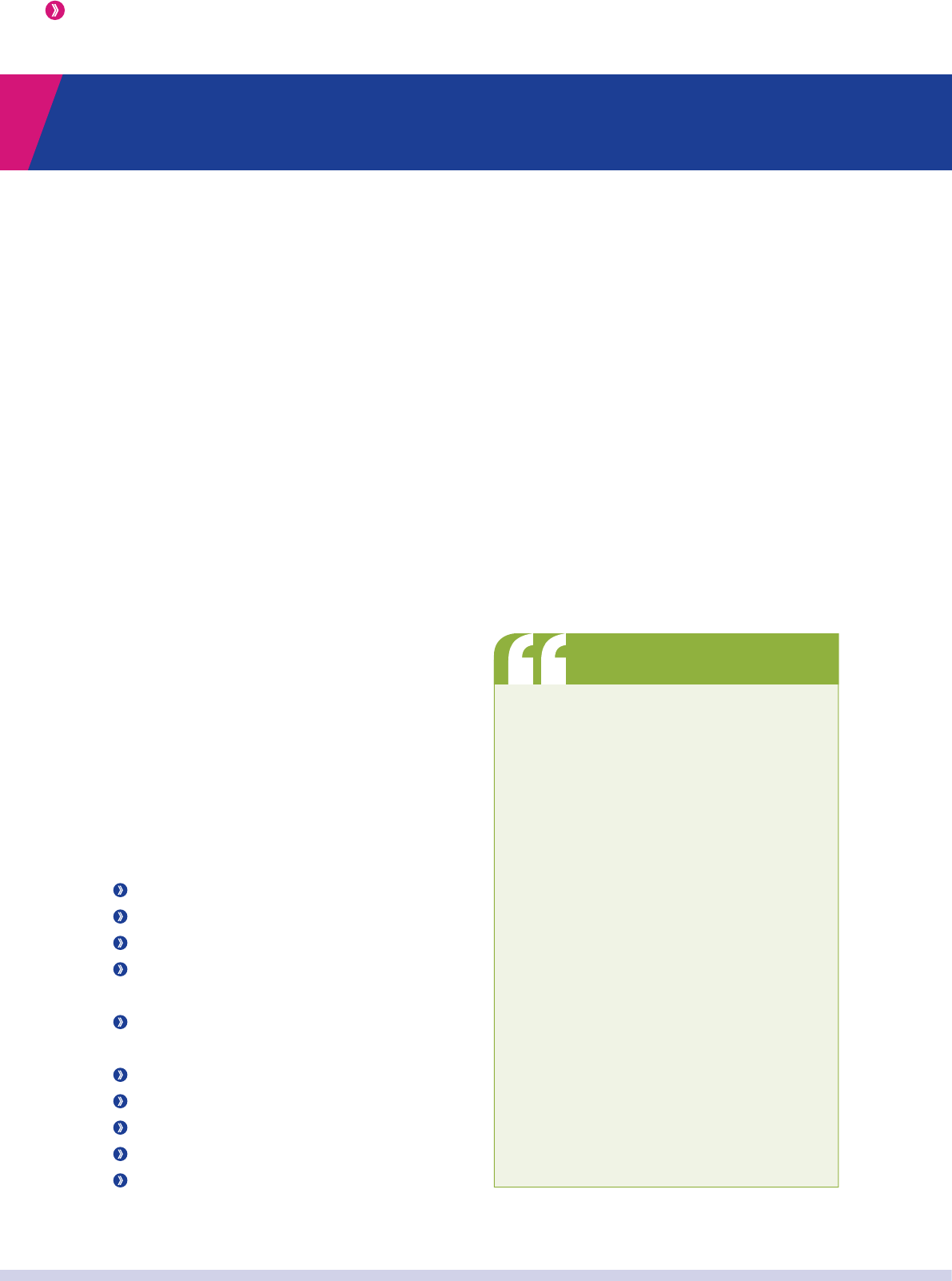
16
Doing Sport Differently
A guide to exercise and fitness for people living with disability or health conditions
But I hate sport
Do you really hate sport or do you just
hate competitive sport? Or perhaps you
just hated Physical Education (PE) at
school.
What we’re talking about here need
not be competitive – unless you want
it to be – and will be nothing like PE at
school. We’re talking about choosing
something that you like doing and that
gets the heart going a little and doing
a little more of it. It certainly needn’t
be cross country running or anything
that we traditionally think of as sport. It
could be yoga or walking, gardening or
dancing, horse-riding or orienteering.
(Sex fits the bill too.)
What are the types of fitness?
Some aspects of fitness are directly
related to health, some not.
Heart (or cardio-vascular) fitness
Strength
Muscular endurance
Flexibility – particularly important as
we get older
Agility – the ability to change the
direction of the body quickly
Speed
Reaction time
Balance
Power (strength multiplied by speed)
Co-ordination
Most of us could benefit from most of
these. Different sports, exercises and
fitness activities develop these different
aspects of fitness to different degrees.
You’re not obliged to work on all of
them. For disabled and non-disabled
people alike, it depends what you’re
interested in and what you want to do.
Marathon runners are more interested in
endurance, footballers in coordination,
most of us are just happy with a
healthier heart and improved flexibility.
I have four children and all of them
have been keen participants in
a number of different sports. As
a wheelchair-using Dad, I have
sometimes been forced to miss seeing
them do their thing because the
organisers simply didn’t think about the
needs of disabled spectators!
It isn’t always easy to ensure that
venues have good access but there is
no excuse for a lack of communication
regarding what is available. Perhaps
sports organisers could refuse to
hire or use venues that don’t provide
access to disabled parents or
spectators.
SPORT TALK

17
Doing Sport Differently
A guide to exercise and fitness for people living with disability or health conditions
I have three kids and like me, they all
love sport. The two sighted ones are
into football, cycling and skateboarding
while the blind one is into football,
goalball (a team sport using a ball with
bells inside), sound tennis, cricket,
trampolining and judo.
My job is simple. I take them along
to any sport that they want to try but
never push them. My encouragement
is always positive. Liam, my blind son,
finds new sports hard at first but once
he’s played them for a few weeks, it’s a
different story.
And the hard work – both mine and
his – pays off. Recently, he was asked
to go for a weekend’s training with the
England B1 football team.
I firmly believe that if you put in the
effort for your child that in the long
run it can only benefit them (and you
in terms of your relationship with
them). Sport is out there for every
disabled child, young adult and adult.
Non-disabled parents can help their
children find the right sport for them.
SPORT TALK
I’m a parent. What can I do?
Whether you’re a disabled parent or
have a disabled child (or both), this
guide is for you too. Read it through.
Perhaps there is an activity you can share
with your child. What about taking them
to see a sport (see chapter 4) or getting
involved yourself behind the scenes (see
chapter 3)?
The key thing is to encourage your child
to get involved. Find out what they most
want to do rather than what you most
want to do or what you most wanted
to do when you were their age. What
are the barriers to your child getting
involved? What can you do to help your
child overcome these? There are many
ways you can help – encouragement
and enthusiasm are probably the most
important but money and lifts or other
help with transport are always welcome
too.
1: Why do sport?

18
Doing Sport Differently
A guide to exercise and fitness for people living with disability or health conditions
When it comes to exercise, disabled
people have pretty much the same
options as non-disabled ones –
everything from simply getting out a bit
more to playing for your country. Once
you start looking, you’ll be surprised
how much is out there.
There isn’t space in this guide to discuss
the issues around every impairment or
every sport or every one of the many,
many possibilities. We all have different
barriers to overcome so not everything
here will be relevant to you. But read the
chapter and think about how it might
apply to you. The main limitation may
turn out to be your imagination.
I don’t know what to do
Have a think about what you hope to
get out of exercise, what you’re able to
do and when you’re able to do it.
If you want to meet people as well as
get fit, a team sport or joining a club
might be best. If you’re stuck for time,
something that you can fit more easily
into the day like walking or exercising at
home or the gym near work might be
better.
Think about what you like doing.
Different sports have different
requirements – speed for sprinting,
strength for rugby, hand-eye
coordination for badminton, ball skills
for football. Even if you didn’t much like
Physical Education (PE) as a child there
were probably some things you enjoyed
more than others.
If you don’t like getting wet, give
swimming a miss. Cross country running
may have been hell on a wet Wednesday
in leaking plimsolls but jogging where
you want, when you want with a decent
pair of trainers and your own soundtrack
is a different matter.
Or take up something you’ve never tried
before – horse-riding, abseiling, skiing
or one of the sports specially devised for
disabled people. Think broadly. It’s not
just the traditional sports that will get
you fit. What about yoga, gardening or
dancing?
Think of ways of doing what you want
to do differently. Put stabilisers on your
bike or swim with a rubber ring or
armbands. Fancy roller–blading but not
sure about your balance? Use Nordic
walking sticks as an aid. Worried your
2: Taking part
Millions of players, thousands of
activities, endless possibilities
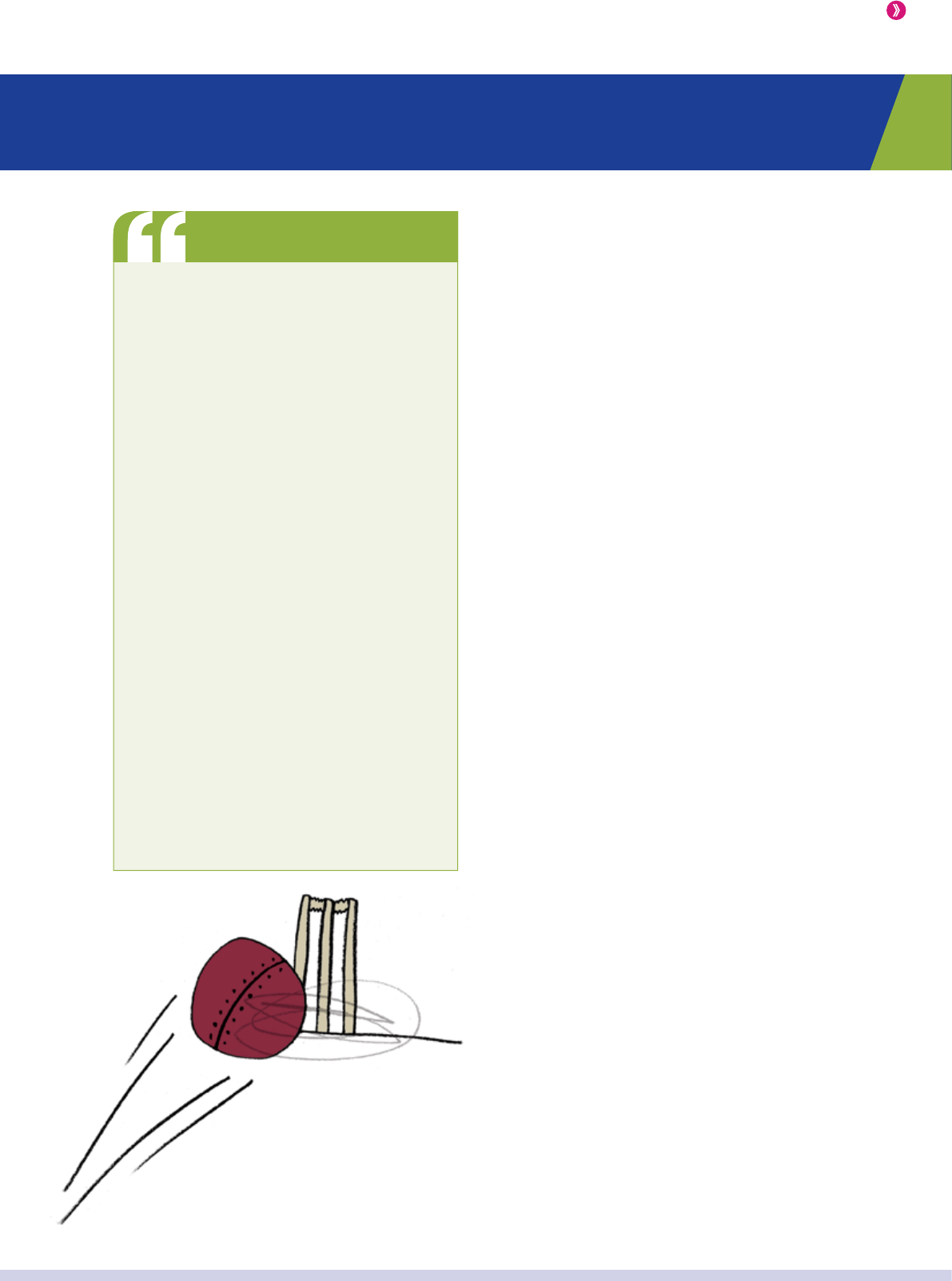
19
Doing Sport Differently
A guide to exercise and fitness for people living with disability or health conditions
dancing is dodgy? Dance at home or
go to a darker night club (or better still
try a No Lights, No Lycra session where
everyone dances – and exercises – in the
dark).
You don’t have to go to a gym or sports
centre. Or indeed anywhere. There are
many exercises you can do at home with
no or cheap equipment. There is a lot
of satisfaction in simply doing one more
repetition of a morning exercise than
you did the day before.
Also think about how fit you are right
now. Some activities are more physically
demanding than others. Don’t start off
with tennis or squash if you’re very unfit.
All that twisting and turning could result
in an injury. Get fitter and more flexible
first with a lower impact activity.
This section looks at some of the
activities you might want to think about.
We include some basic, general advice
but, depending on your impairment, you
might also want to get some personal
advice from your health professional,
local disabled person’s organisation,
organisation for people with your
impairment or a fitness coach.
Exercise and the rush you get from it
can be addictive. If you’re ever worried
about it becoming an obsession, take a
week off. If you can’t do this, get some
help.
Fred Bridges, international cricketer
I didn’t even know you could play
cricket with hemiplegia but then
someone told me about the work the
ECB were doing so I got in touch with
my local club. They made it really easy
to get involved. I come from Sussex but
there are opportunities at grass roots
level for disabled people to access
the sport all over the country. There
are pathways up to international level
for blind, deaf, physical disability and
intellectual disability. I never thought
that when I started playing that I would
end up in Dubai, spin bowling for
England against Pakistan in the first
ever international series between two
national sides of physically disabled
players. You could say I’ve been
bowled over.
SPORT TALK
2: Taking part

20
Doing Sport Differently
A guide to exercise and fitness for people living with disability or health conditions
Walking
If you can walk, there’s no easier and
more effective exercise.
If you can manage longer distances at
faster paces so much the better but
even if you can’t, there’s an enormous
amount to be gained. A review by
Harvard Health Watch suggested that
just 5.5 miles per week and at a pace
as casual as about 2 miles per hour was
good for the heart.
Some people are sceptical about the
benefits of walking because it’s not
aerobic. True, we rarely get sweaty
and breathless doing it. But exercise is
about duration and frequency not just
intensity. In fact, although you obviously
burn fewer calories walking than
running, a greater proportion of the
calories burned are fat. So while you may
have to walk for longer than you’d need
to jog you’ll still benefit.
But this doesn’t necessarily mean
walking takes longer than jogging. After
all, with walking, you don’t need to
warm up, change into special clothing or
shower afterwards.
Two other great advantages of walking
are that you can incorporate it into your
existing day by, for example, leaving the
car at home or getting off the train a
stop earlier.
You can also meet other people by
joining a walking or rambling group.
I like simply walking – I walk the dog
for 40 minutes a day. I like the fresh air,
sunshine and exercise.
Dogs are great for people with mental
health conditions – they love you and
are always there for you. The dog is my
companion but he’s also my incentive
to go out when I don’t feel like it. Dogs
are great for social contact – everyone
wants to pat them or talk about them,
especially as my dog has three legs.
You can get a support dog if you have
a mental health condition. Contact
Assistance Dogs.
SPORT TALK

21
Doing Sport Differently
A guide to exercise and fitness for people living with disability or health conditions
Cycling
Cycling is popular because like walking
it is an effective mode of transport
that gets you fitter at the same time.
Admittedly UK roads are not exactly
bike-friendly but there are more and
more cycling lanes and opportunities to
ride off-road.
There are tricycles, quadcycles,
recumbants and other alternatives for
those unable to ride a regular bicycle
including hand-powered bikes called
handcycles.
I had a stroke when I was 31. Four
years later, I was fat, unhappy and not
taking any exercise.
I didn’t have the balance to ride a
bicycle but I chanced across a small-
wheeled tricycle in a local shop. I rode
it for five minutes and realised that,
once I’d attached the plastic ‘rat-trap’
on the pedal to my foot, I could ride it.
Getting on to my tricycle is about the
most obviously disabled thing that I do
because my foot muscle is gone but
it’s a great example of doing things
differently because, once I’m on, I’m
suddenly free and can cycle as far or
as fast as anyone else.
I cycle ten miles everyday to and from
work and I’m as fit as a fiddle. But
the greatest benefit is mental. I used
to be exhausted by 6pm but now I’m
energised by using a different part of
my brain to cycle.
I’ve cycled round London, Newcastle,
Leeds, Birmingham and Bournemouth.
I’ve even taken the ferry to Hook of
Holland and gone to Amsterdam. And
the great thing is it’s something that I
do totally for myself without anyone
else’s involvement.
As a barrister specialising in
discrimination law, it chimes perfectly
with my work which is often about
challenging presumptions of what
disabled people can and can’t do. In
fact, my tricycle is actually better than
a bike for me as it can carry more
luggage – ideal for my legal books.
SPORT TALK
There are also power-assisted bicycles
and static exercise bikes for using at
home. Side-by-sides or tandems allow
two to ride at once.
Running bikes are half-way between
running and walking. They are three-
wheeled tricycles with no pedals
which support you as you walk or run.
2: Taking part

22
Doing Sport Differently
A guide to exercise and fitness for people living with disability or health conditions
Running bikes are particularly good for
people with impairments that affect
their mobility and balance. But they
enable pretty much anybody to propel
themselves considerably faster than they
could unassisted making them a fun way
to improve strength, fitness and well-
being for people of all ages and fitness
levels.
There are contacts for all types of cycling
and running bikes in chapter 5.
Running
If you want something a little more
vigorous than walking, try jogging.
There is plenty of advice available for
new runners but it all boils down to one
thing: don’t get injured. (Actually that’s
pretty good advice for any new sport or
exercise regime.)
A common pattern is that new joggers
start off slowly, go a little faster and a
little further each time and then, after a
handful of runs, get injured. The reason
is that your heart and lungs often rise
to the challenge more quickly than your
muscles and skeleton. The maxim is:
don’t do more today than you will be
able to do tomorrow. Warm-up with
some walking and stretching. Take it very
easy. Don’t run every day at first. And
make sure you’ve got proper running
shoes suited to your feet – buy them at
a decent sports store.
What you’re trying to do is to get your
pulse into a zone that is between 60%
and 85% of your maximum heart rate.
(Your maximum heart rate is 220 minus
your age.) A heart rate monitor can
keep you in this zone. Run while you’re
below and in the zone. Once you go
above your maximum, walk until you’re
comfortably back in the zone again. At
first you may find that you really can’t
run far at all before you’re out of the
zone. Listen to your body. It will keep
you safe (and uninjured). There’s no
problem exercising below the zone so
any amount of walking will still help but
exercising continually above the zone is
dangerous.
Exercise –
at the gym or at home
Just 5-10 minutes a day exercise will
help. Talk to your health professional
or ask an organisation for people with
your impairment about what the best
exercises are for you to do. You can also
get personalised advice at a good gym
but if you want to work out at home,
that’s fine too.
There are some excellent exercises
you can do at home which require no
equipment at all including the press-up,
the sit-up, the burpee and the plank.
A Wii or other TV or PC-linked games
console can help.
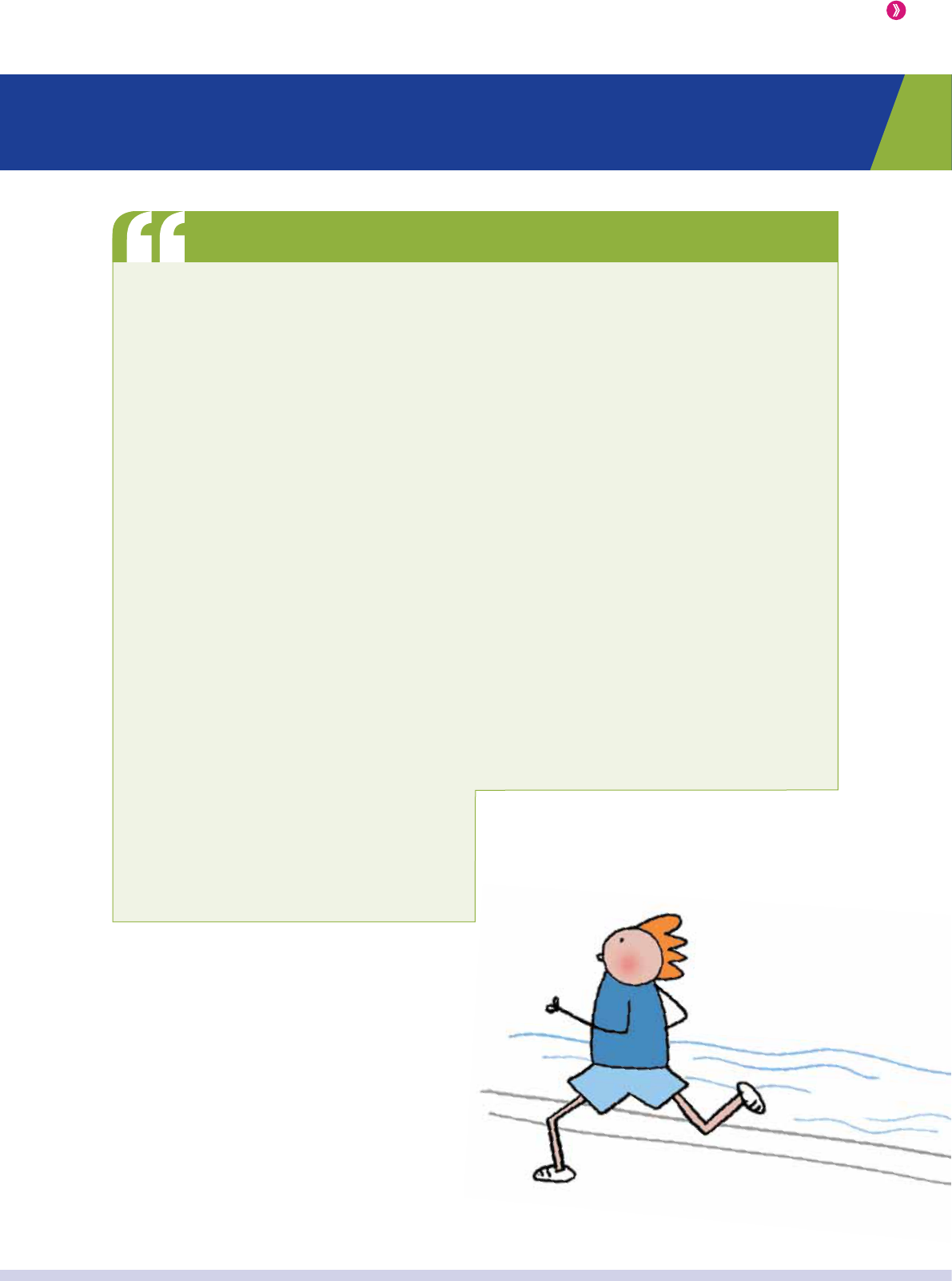
23
Doing Sport Differently
A guide to exercise and fitness for people living with disability or health conditions
The old maxim ‘use it or lose it’ applies
to most muscles but that doesn’t
mean you need to do weight-lifting.
Stretching a joint through its range
of movement is most useful. But get
advice first, especially if you have a
physical impairment – exercises that are
not suited to your impairment may be
dangerous.
I enjoy running and taking long walks.
I think there is a physical reason,
the release of endorphins in the
brain. But as well as that, I feel a
sense of achievement while doing
them (especially running) and I almost
always feel much more mentally
relaxed after the run than before it.
I feel better about myself if I’ve
managed to do some exercise. It
makes me feel that I’m not such a
bad person after all (at least for a
time). Also, I do most of my runs and
walks in scenic places such as parks
or rivers so I enjoy looking at the
scenery too.
I always feel physically tired after
running, but that’s much better than
the mental tiredness I feel many other
times.
I mainly run by myself but normally
walk with others. I quite enjoy the
company on those occasions although
sometimes, I walk by myself which I
find quite calming.
It can be difficult to find the time but I
usually do a run or walk at weekends,
sometimes both. It is frustrating
that I can’t find more time to run. It’s
easier when the evenings are lighter.
Depression can make me very
lethargic, and it can be quite difficult
to force myself out of the house to do
exercise, especially when it’s cold and
dark. But for anyone with a mental
health condition, I would certainly
recommend making the effort.
SPORT TALK
2: Taking part

24
Doing Sport Differently
A guide to exercise and fitness for people living with disability or health conditions
How do I choose a gym?
The best bet is to look for one of the
nearly 400 IFI (the Inclusive Fitness
Initiative) accredited gyms.
IFI is a programme managed by the
English Federation of Disability Sport
(EFDS) that supports the UK fitness
industry to become more inclusive.
It provides accreditation for gym and
other facilities that meet the standards
in four areas:
accessible facilities
fitness equipment that is appropriate
for the vast majority of disabled
people
staff training
inclusive marketing
You can find your nearest IFI facility by
going to the EFDS website
(www.efds.co.uk) searching on ‘Inclusive
Fitness Initiative’ and using the Facility
Search.
Visit any gym you’re interested in at
peak time (usually 6:00-8:30pm) and
ask yourself a few simple questions.
Is it overcrowded? Is there enough
equipment? Does it look clean and
well-maintained? Is there somewhere
to warm-up and warm-down? What are
the changing rooms and showers like?
By doing fitness and strength training,
the balance and stability of my body
improves. Together with chiropractic
treatments, this helps to keep my
spine healthy and straight. I enjoy the
strength training the most because I
can use my whole body.
For my short arm I use a special arm
prosthesis with vacuum-fitting. I use
straps to attach the prosthesis to, for
instance, a pull down machine. The
prosthesis must fit well. Using my short
arm during training really feels special
– during rowing, for instance.
I exercise twice a week. Half an hour
there and half an hour back home by
bicycle. I do strength training for about
1 hour. Then another 15 minutes some
kind of cardio exercise and stretching
and I am ready.
SPORT TALK
Ask about the instructors. Are there
enough around? What are their
qualifications? Have they had disability
awareness or other training in working
with disabled people? Are they
registered with any professional body?
(Check that professional body out – visit
their website.)

Doing Sport Differently
A guide to exercise and fitness for people living with disability or health conditions
We use a Kinect console provided
by lifelites.org in our hospice and it’s
great for kids of all ages. It’s a sociable
thing for sometimes isolated children.
They can exercise at any time – no
need even to go out. And these sorts of
consoles are also fun and easy to use.
We want to empower the children and
young people, and by choosing their
own games and exercise, they are
given control over their leisure time.
We had a six year old who has
problems with her coordination on
it non-stop during her last visit. It
was wonderful as it really brought
her out of herself and increased
her confidence, movement and
concentration.
SPORT TALK
Don’t be over impressed by fancy
video screens. Air-conditioning, lighting
and drinking water facilities are more
important. If you do want to watch TV
while exercising, check out what’s on.
Some people prefer to listen to music or,
on some machines, even read.
Ask about the programme of classes
and see if anything suits you.
Check fees carefully. Is there a joining
charge? Any additional costs for classes
or other facilities? How do you cancel
or suspend membership? Any discounts
for disabled people or for paying for a
longer period upfront.
You don’t have to join a private gym.
Many local authority gyms are excellent
and may have higher levels of disability-
awareness among the staff.
Try it out. Before joining, get a daily or
weekly pass and see what the place is
really like. Some gyms offer free trials or
free trial lessons.
Good gyms will give new members a
questionnaire to help assess their fitness.
If you haven’t exercised for a while or
need specific advice because of your
impairment, ask for a fuller assessment
by an instructor. Before letting you on
the equipment, the gym should explain
how it all works and suggest the best
programme for you to begin with. If they
don’t, consider another gym.
2: Taking part
25

26
Doing Sport Differently
A guide to exercise and fitness for people living with disability or health conditions
I hadn’t taken any exercise for years
and years. I just assumed it would be
too difficult.
I was approaching 40. Maybe you’d
call it a mid-life crisis but I was about
to change jobs and wanted to do
things differently this time. I’d been
working all the hours and not eating
properly. I was putting on weight.
I went to the local gym and it was the
world of the body beautiful. I just didn’t
like the way I was treated. I was seen
as an oddity. They showed me around
but very half-heartedly. I didn’t join.
So I went online and looked for local
personal trainers. I made a few phone
calls. A couple of them were very wary
and that made me wary. Then I got
this guy Darryl who was 100% up for
it within minutes. He understood a bit
about arthritis. He’d done a module on
disability in his training. And he was
keen to learn more.
He was the first to ask me what I’d
consider standard questions to find out
what I could and couldn’t do. I told him
about my mobility and the operations
I’d had. I said ‘I can’t run, can’t grip and
can’t get down on the floor’. He said
‘fine!’
The first meeting was still hell. This
young whipper-snapper turned up in
all his fab fitness gear. But he was very
nice. He said: ‘put some music on and
let’s dance’. I said ‘you’ve got to be
joking’. But I did and it was hysterical.
Within 15 minutes we were both
laughing.
We did some range of movement
exercises. He had read around
the subject and knew about the
replacements I’d had and what
you could do without driving the
rheumatologists up the wall.
Ten years later, it’s still fun. We never
do the same session. It’s always fresh
and different. Darryl has got to know
me and what makes me tick. He knows
when to push and when not. I’ve had
lower back and shoulder pain at times
and he knows how to focus on these
areas.
With Darryl I went back to that gym
and this time I joined. I don’t think their
attitude had changed but I had. I was
more confident. Now I see Darryl or go
to the gym at least once a week.
SPORT TALK

Doing Sport Differently
A guide to exercise and fitness for people living with disability or health conditions
Check your local gym for individual
advice on fitness classes or individual
programs, many at affordable prices.
Swimming
Swimming is a great sport and among
the safest ways to exercise as your body
is supported up to 90% by the water.
Also because water is about 12 times
as thick as the air, the water resistance
maximises the benefit you get from your
movements.
This means that swimming is a little
like jogging and lifting weights at the
same time. Plus, of course, your body is
submerged making it a less public form
of exercise than some others.
There are many instructors who are used
to teaching disabled people to swim and
many clubs and county swimming set-
ups have a disability liaison officer.
Contact your local pool to see what is
available in your area. The Big Splash
section of the British swimming website
– www.swimming.org/bigsplash – may
help.
You can’t put a price on feeling good
about how you look and feel. Apart
from the obvious physical benefits,
it helps me wind down after heavy
work periods. When I’m exercising
I eat more sensibly and am better
about carving out time for myself
rather than just working and working.
Keeping the muscles around the
replacement joints as strong as
possible also keeps my arthritis
stable.
A personal trainer isn’t cheap – mine
is £60 an hour – but if you find the
right person it is worth it. Darryl’s firm
specialises in working with women
so that helped too. It’s like finding
a counsellor. It’s a very personal
relationship. You need to shop
around to find someone you’re totally
comfortable with.
Without Darryl I’d be far less
ambulant and probably overweight.
In return I sort out his girlfriend
problems so it’s a fair exchange
really.
2: Taking part
27

28
Doing Sport Differently
A guide to exercise and fitness for people living with disability or health conditions
Adapted sports
Many sports can be played by disabled
people on the same basis as non-
disabled people. But some have also
been adapted to make them more
disability-friendly. Some adaptations
are very slight; others more significant.
Football for people with learning
disabilities is played by the same rules.
So is deaf football – except referees use
flags rather than whistles. Blind football
is five-a-side with sighted goalkeepers,
a ball filled with ball-bearings and no
offside rule. There is more on
www.disabilityfootball.co.uk
Similar adaptations appear in other
sports such as cricket (www.ecb.co.uk/
development/disability-cricket) – the
England and Wales Cricket Board has
opportunities for blind, deaf, physically
and intellectually disabled players – and
tennis (www.tennisfoundation.org.uk/
disabilitytennis).
There are several sports specially
adapted for wheelchair-users, five are
internationally organised and played
at Paralympic level (see box opposite).
You don’t need to be a permanent
wheelchair-user to take part. You
can find out more about them from
Parasport (see page 59).
There are more examples of adapted
sports in the section on Paralympic
Sports which follows.
Paralympic sport
If you want to play in an organised
way with other disabled people or to
compete at a higher level, you might
want to look at the disability sports that
come together under the Paralympics
umbrella. There are currently about
20 summer Paralympic sports and five
winter ones but the list is growing.
Paratriathlon, for example, combining
running, swimming and cycling is taking
I can swim completely independently
once I’m in the water. Some say my
stroke is all wrong and that I swim
like a frog but so what? I can swim
40 lengths of my local pool without
stopping so ungraceful as my stroke
may be, it works OK.
The experienced swimmer, when in
the water, may be classed among the
happiest of mortals in the happiest
of moods, and in the most complete
enjoyment of the happiest of exercises.
The Swimming Instructor – William
Wilson (1883)
SPORT TALK
SPORT TALK

29
Doing Sport Differently
A guide to exercise and fitness for people living with disability or health conditions
Wheelchair tennis is much like the
‘running game’ except the ball can
bounce twice. The Tennis Foundation
(www.tennisfoundation.org.uk) can tell
you more about a game that is played
by over 6,000 people in more than 70
countries.
Wheelchair basketball is also much
like the familiar ‘running game’.
Organised under the auspices of the
Great Britain Wheelchair Basketball
Association, it’s very popular in this
country with its own league of around
65 teams.
Wheelchair rugby is a full-on contact
sport that is played indoors on a
basketball-style court.
›› Wheelchair Sports
Originally called murderball when it
was developed in Canada in the 1970s,
it actually shares little with regular
rugby beyond its name. The Great
Britain Wheelchair Rugby Limited is
the national governing body for the
game in England, Scotland and Wales.
There is also wheelchair curling and
wheelchair fencing.
If you have a go, you’ll want to buy
or borrow a specialist wheelchair
designed for your sport. Ask the people
you’re going to be playing with or your
local organisation of disabled people
for advice.
off among disabled fitness enthusiasts
and will be included in the Paralympics
in 2016 in Rio.
In order to ensure fair competition,
athletes are classified according to their
impairment and its severity. There are
six official Paralympic categories, based
on type of impairment:
people with a partial or total
amputation of at least one limb
people with a non-progressive
neurological disorder resulting from
cerebral palsy, traumatic brain injury
or stroke, or similar disabilities
people with an intellectual disability
(usually called a learning difficulty or
learning disability in the UK)
people with visual impairments
wheelchair-users
Les autres (people with an
impairment not easily placed in one
of the other five categories including
people with dwarfism, multiple
sclerosis or other disabilities)
2: Taking part

30
Doing Sport Differently
A guide to exercise and fitness for people living with disability or health conditions
Bulbul Hussain, British Paralympic
Wheelchair Rugby team
I had a road traffic accident on holiday
in Bangladesh and broke my neck.
When I came back to England I was
in Stoke Mandeville (SM). That was
the first time I saw wheelchair rugby
– there was a training session – but I
didn’t think it was for me. Before my
accident, I played football with my
friends for fun but I wasn’t really a
sportsman.
But when I came home from SM I was
bored and isolated. At SM there had
been lots of other wheelchair-users
but there weren’t any at home. I didn’t
want to hang out with my old friends
either. I just sat around smoking.
The local occupational therapist
came round and saw I was bored so
she suggested painting. But I didn’t
like that. It was too messy. Then she
mentioned wheelchair rugby and this
time when I actually tried the sport I
really liked it. After the first session I
ached all over, my muscles, my joints,
and when I got home I had a massive
blister on my hand. I told the captain
that I didn’t think I could come to
training the next week and he told me
that I could be a really good player.
This was the encouragement I needed
because I’m a real competitor. When
I was in hospital I was competing
with the bloke in the bed opposite to
get better quicker than him. Players
are categorised by their level of
impairment. I’m a one pointer which is
the second highest level of impairment
and I want to be the best one-pointer
on the squad. Sometimes people tell
me I’m maybe the fastest one point
player in world and that really makes
me feel good.
I stopped playing for two years when
I got married and had a son. But
I noticed I was losing fitness and
missing the social side too. Playing
again made me happier as well as
fitter. It took me about four years to get
back to British team standard. There
were one-pointers ahead of me in the
team.
For 2012 I’m the oldest man in the
squad and we really want to win it
in our own back yard. Wheelchair
rugby sold out quicker than any other
paralympic sport so we have a good
chance with a big home crowd behind
us. But it’s a team game and we all
need to play our best to win gold.
SPORT TALK
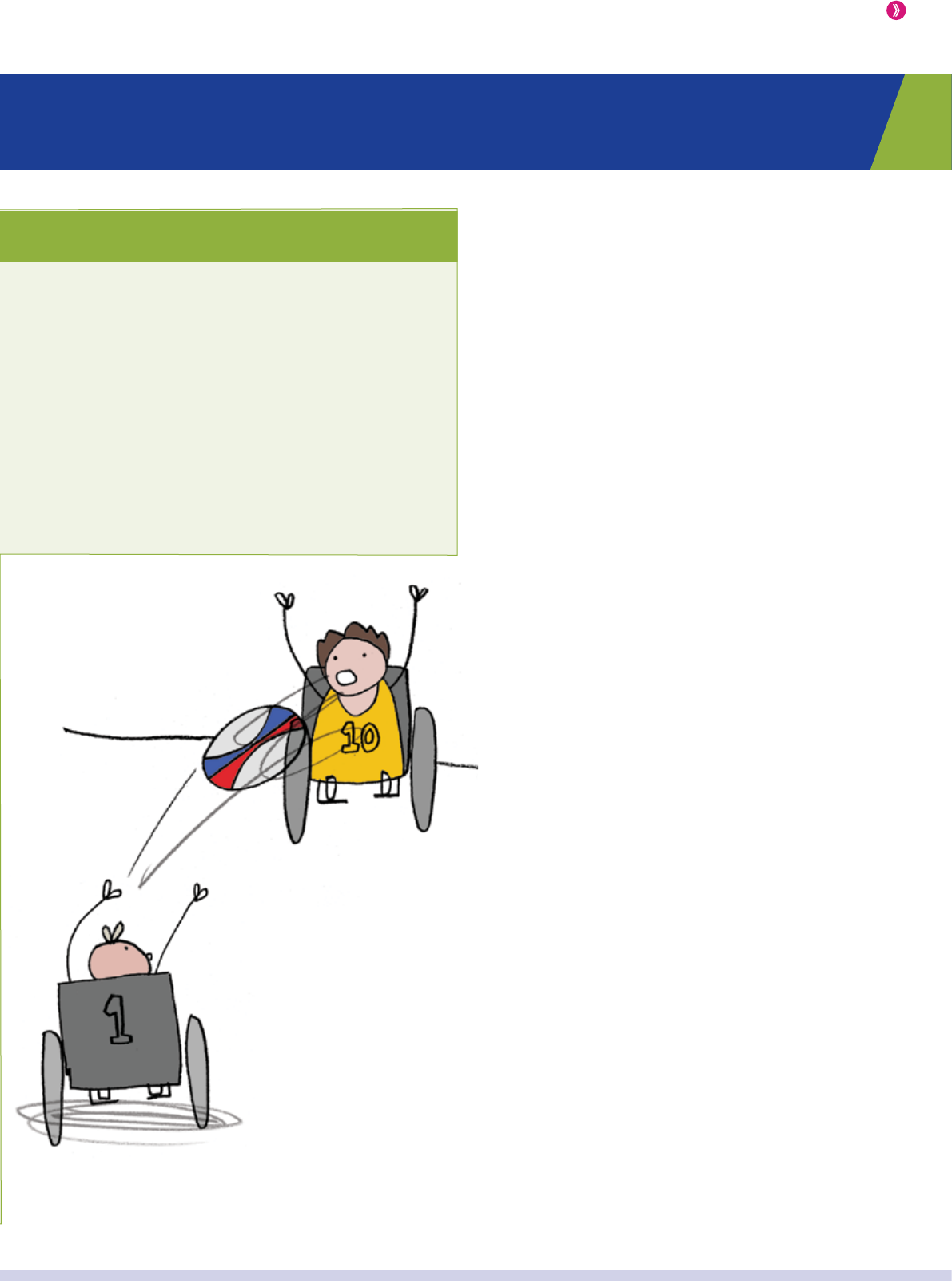
31
Doing Sport Differently
A guide to exercise and fitness for people living with disability or health conditions
Looking at the full Paralympic
programme will give you a good idea
of the range of sports developed or
adapted particularly for disabled people.
It includes archery, alpine and Nordic
skiing, athletics, adaptive rowing,
cycling, equestrian sports, football, judo,
powerlifting, sailing, shooting, swimming
and table tennis. There is also sitting
volleyball (literally volleyball played
sitting on the floor over a lower tennis-
style net), ice sledge hockey (again, as
the name suggests, a form of ice hockey
played sitting in small sledges) goalball
(a sort of handball for people with visual
impairments) and boccia (a game like
bowls or petanque for athletes with a
severe degree of physical impairment).
Of course, people with a learning
difficulty can get involved in most sports
without the need for adaptations. But
there are currently three Paralympic
sports open to athletes with a learning
difficulty: athletics, swimming and
table tennis. There are also a whole
host of other sports in the Inas Global
Games. Inas is the International
Federation for sport for para-athletes
with an intellectual disability. You can
find out about these from the UK Sports
Association for People with Learning
Disability.
Wheelchair rugby has taken me all
over the world – the USA, Canada,
Australia, New Zealand – and I’d be a
completely different person without it.
I don’t think it’s good to sit at home in
front of the telly. You need to burn off
all those calories and for me the best
and most enjoyable way is through
training.
2: Taking part

32
Doing Sport Differently
A guide to exercise and fitness for people living with disability or health conditions
Visit Parasport (www.parasport.org.uk),
the website of the British Paralympic
Association (BPA) for more information.
You can even see what Paralympic
sports you could compete in using the
self-assessment wizard. There are other
useful contacts in chapter 5.
Other Sports
As far as exercise options go, all of the
above add up to nothing more than
the tip of the iceberg. There are many
disabled people playing many other
sports and involved in many other
activities.
Angling remains the most popular
participant sport in the UK – four
million people fish each year, of which
tens of thousands are disabled. The
British Disabled Angling Association is
working to improve access further.
Badminton is increasingly popular as it is
a sport that disabled and non-disabled
players can play together. Although it
is not yet a Paralympic sport, there is
an organised Parabadminton network
including competition for wheelchair-
users, ambulant players, dwarf players
and players with learning disabilities.
Bowls and golf are two other popular
sports disabled and non-disabled people
can play together.
I had ridden all my life and had had a
horse of my own, but at the age of 42
I had a brain tumour. I found myself
partially sighted, deaf on one side, no
balance (and unable to stay upright),
partial paraplegia on my entire left
side, including my face.
While in rehab, I dreamed of riding
again. The Riding for the Disabled
Association (RDA) rode to my rescue.
Although I had lost a lot of weight and
strength, I managed, with the help
of the RDA staff and volunteers, to
progress. I was thrilled to find that the
awful balance issues were completely
removed when riding. This was a
revelation that was the beginning
of so much. I simply cannot express
this enough. I gradually regained
confidence and a renewed feeling
about what I could achieve physically.
These days, I have improved so much
that I compete in Paralympic dressage.
SPORT TALK

33
Doing Sport Differently
A guide to exercise and fitness for people living with disability or health conditions
I’m totally deaf and blind and have
problems with balance – it’s like being
permanently drunk (but not as much
fun). I do everything through the sense
of touch.
My chosen favourite sports are
quadbiking, jetskiing and tandem
cycling. With the first two I normally
sit on the front with a sighted pillion
rider who uses a simple but effective
system of touch signals to indicate
the direction to steer and when
to slow down. (I don’t need any
encouragement to go faster!)
SPORT TALK
And these are just the sports that the
disabled people we have spoken to have
told us about. There are umpteen more.
The Recreation and Sports section of
Ableize (www.ableize.com), the UK’s
virtual directory of resources run by
disabled people, includes more than
30 activities including bowling, cricket,
martial arts, water-sports and flying.
There are many variations. Take the
example of our national sport football.
There are just two football events played
at Paralympic level (seven-a-side for
athletes with cerebral palsy and five-
a-side for blind people) but there are
many other forms of the game.
I used to motorcycle but when my
balance started to go in the mid 90s, I
bought my first quadbike which was
fantastic fun. I was offered the use of a
100 acre field and the chance to get up
some serious speed on the straights. It
takes skill to do it safely without sight
and a lot of practice to build up the
speed and slow down on grass without
skidding – you really have to trust your
pillion rider and vice versa. It was
exhilarating to reach speeds of up to
80mph in a matter of seconds riding a
race-tuned 700cc quad.
Other people’s attitudes can get in the
way of disabled people doing sports.
Chief among them is that it would be
too dangerous. But where are the
stats to back that up? Isn’t it true that
thousands of sighted people crash
their cars every year and yet still
carry on driving afterwards? Shouldn’t
disabled people be allowed to have
accidents too without being made to
feel somehow that it will be seen as a
reason to stop their sport?
In 2004 with a serving police officer
as pillion rider I smashed my previous
quad world speed record reaching a
top speed of 136mph and an average
speed of 133mph.
2: Taking part

34
Doing Sport Differently
A guide to exercise and fitness for people living with disability or health conditions
The Football Association (FA) alone runs
teams for partially-sighted people, for
deaf and hearing-impaired people, for
people with learning disabilities and for
amputees. There are umpteen other
football teams out there including those
for people with mental health conditions
as well as physical ones. And all this
I do sport quite regularly. I go to the
gym. I do weights. I prefer these to
running on treadmills and I play tennis
– it’s aerobic but not boring. Although I
work full-time, I play three or four times
a week.
Compared to a treadmill, tennis isn’t
a chore and the exercise is a by-
product of my enjoying myself. Doing
something that’s fun and getting some
exercise is a double boost to your
mood. I played tennis before I began
to experience depression so I knew I
enjoyed it.
Tennis is a great game for people with
mental health conditions but we don’t
realise it. We often get cut off from
the world and find contact with others
threatening. I think carers and health
professionals need to emphasise the
benefits of exercise and the contact it
brings more.
The problem with tennis is that you
can lose and that can be a knock back
– especially if you’re very competitive.
But it doesn’t have to be competitive,
especially when you’re a beginner.
Just knocking up is fun and sometimes
better exercise than a game.
If you don’t want any competition there
are lots of fun gym classes including
yoga and tai chi. Gentle exercise
like this calms the mind. Thinking of
the position you’re holding and the
breathing distract you from what’s
on your mind. You can also do it even
when you’re genuinely tired.
SPORT TALK
is to say nothing of the many, many
disabled players playing for ostensibly
non-disabled teams or kicking a ball
around with their mates in the park. So
look around. Whatever exercise or sport
interests you, someone somewhere will
be doing it.
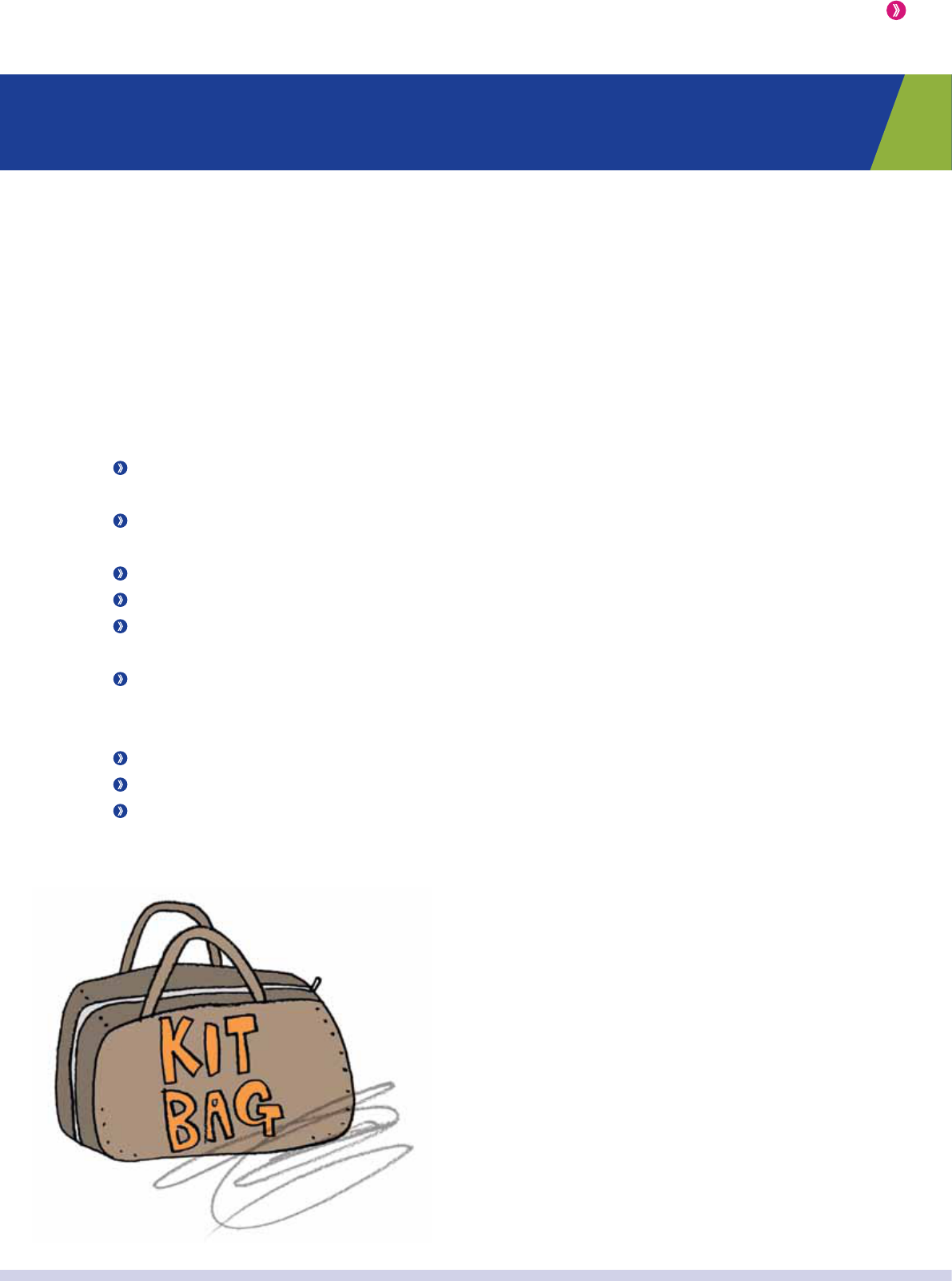
35
Doing Sport Differently
A guide to exercise and fitness for people living with disability or health conditions
What do I need?
The kit bag is key to any exercise but
exactly what you pack depends on what
you’re doing. You’ll need to make your
own list – unfortunately, it tends to get
longer as you get older – but these are
the sorts of things to think about:
water (and/or orange squash, a
cheap, easy energy drink)
towels (large for showering and small
for wiping off sweat during exercise)
toiletries
medication
something to keep sweat out of your
eyes? (sweatband, bandana etc)
healthy post-exercise snack to
deter you from going to the pub or
cafeteria
MP3 or other music player?
keys (including Radar key)
your kit including underwear, shoes
and socks suitable for the activity
you’re undertaking
Can I really access sports
facilities on the same basis as
everyone else?
Yes. And it’s not just because of the
equality law. It’s also because it’s good
business for those who run sports
facilities, gyms, sports clubs and stadia.
These establishments have been hit
by the recession as much as anyone
else and they’re keen to get customers
through the door.
There are over eleven million disabled
people in the UK but only 16% belong
to sports clubs (compared to 26% of
non-disabled people). Indeed, only
about 6.5% of disabled people currently
participate in at least 30 minutes of
exercise at moderate intensity at least
three times a week. So we represent an
enormous potential market.
Research by the English Federation of
Disability Sport (EFDS) identified some
of the main barriers to participation.
These included lack of privacy in
changing rooms and lockers, uneven
surfaces, poor signage, lack of
appropriate equipment, poor quality
of the welcome from staff, absence of
single sex sessions and cost.
Some of these may be barriers for you.
However, more and more providers
of sports facilities, especially local
authorities and national sporting bodies,
2: Taking part

36
Doing Sport Differently
A guide to exercise and fitness for people living with disability or health conditions
are trying to break down these barriers.
Sport England and other bodies now
provide guidance on accessible sports
facilities built around an inclusive design
process.
But it’s also a question of attitudes –
ours and theirs.
Some people involved in exercise and
fitness just don’t get it. They don’t
understand how people with mental
health conditions, learning difficulties
or physical impairments can do sport.
There are fewer and fewer of these
people around but if you encounter one,
why not lend them your copy of Doing
Sport Differently or download a free
copy from www.disabilityrightsuk.org
We tackle all the common
misconceptions about sport and
disability in section one.
Some trainers and coaches may be
under the same misconceptions. Refer
them to their professional body, most
of them will have a policy on equal
access and will offer equality training.
At www.interactive.uk.net there’s
even a free online disability equality
training course called ‘Be Inclusive and
Active’ accredited by the National Skills
Academy and offered in partnership
with Sport England, the English
Federation of Disability Sport and
disability organisations such as Disability
Rights UK.
We need to think about our own
attitudes too. We can be our own
biggest barrier. But it comes down to
this: it doesn’t matter what you or
anyone else thinks. It’s not a question
of whether you’re good or bad. It’s not
a question of how you look. It’s just a
question of whether you want to do it or
not. If you want to, you have a right to.
Leisure centres, swimming pools, tennis
clubs and tennis courts, golf clubs, rugby,
cricket and football clubs, ice rinks,
riding schools and equestrian centres,
gyms, health and fitness clubs, rowing
and sailing clubs, adventure centres,
sporting venues – they’re all covered
by the Equality Act and must all make
‘reasonable adjustments’ to make their
facilities inclusive. This applies to paid-
for and free services (including free
trials) and includes changing facilities
(you should be able to change in the
same privacy and comfort as a non-
disabled person).
There are some exemptions to this.
More about them later (see Can a sports
club turn me down for membership? on
page 38).
Health and safety is no excuse. Under
the law, disabled people are entitled
to make the same choices and to take
the same risks within the same limits as
anyone else so any decision taken on
the basis of health or safety must be
proportionate to the real risk.

37
Doing Sport Differently
A guide to exercise and fitness for people living with disability or health conditions
I extol the virtues of croquet to anyone
who will listen. It’s one of the few
international sports in which we, the
Brits, excel. It’s totally amateur and
men and women, old and young, fit or
not at one’s best, compete enjoyably
with one another.
The possibility of a handy pint
nearby in the middle of a match are
extra ammunition in the process of
persuasion.
I began playing in the garden with my
Dad. When I took a PGCE in Cambridge
I discovered that there was a bit more
to it than just pottering around the
lawn.
Croquet is played to the highest levels
on an amateur basis. Personally, I’m
quite competitive and it’s great to find
a sport where an average sort of bloke
like me with various bits missing can
play one of the top players in the world
and still have a good time. There’s no
separate arrangement for disabled
players because there are no barriers.
One of the all-time greats, Monty
Spencer-Ell, played to a very high
standard despite losing both arms in
World War I.
The reputation of croquet as being an
elitist game played by toffs on rectory
lawns persists but it’s quite wrong.
Yes – you’ll probably always be playing
in a pleasant setting but the game is
accessible to all ages and pockets. All
you need to start playing at your local
club is a pair of flat shoes. The club
will supply the rest of the gear.
My club is in Norfolk in the beautiful
grounds of Stow Hall, just outside
Downham Market in Norfolk. It’s a
haven of peace and calm, like a lot
of croquet clubs, and each season
roughly 100 disabled people come
along and have a go. Log on to the
Croquet Association website. I’m sure
the welcome will be just as warm at
your local club.
SPORT TALK
2: Taking part

38
Doing Sport Differently
A guide to exercise and fitness for people living with disability or health conditions
Can a sports club turn me
down for membership?
In theory, in very particular
circumstances, yes.
This is one of the exceptions to the
general principle of equal access
enshrined in the Equality Act 2010.
Some membership organisations
– known as associations – which
have more than 25 members and
are genuinely private with specific
requirements for membership do have
the right to discriminate.
That is to say that they can select their
members on criteria of their own
choosing (for example, the requirement
to be nominated by an existing
member). You can think of obvious
examples where this makes sense such
as organisations of disabled people
(which may not be open to non-disabled
people) or parents’ associations (which
may not be open to non-parents). But
it also includes some sports clubs and
special interest clubs.
However, whether or not an
organisation is an association and
therefore entitled to discriminate in the
selection of its members is a question
of law, not something the organisation
can decide on the spot just to refuse
someone access to their facilities.
So the advice is: if you want to use any
facilities, ask. If they’re not accessible to
you, there may well be some ‘reasonable
adjustments’ that can be made. Perhaps
they’ve not come across someone with
your impairment or health condition
before. If you can see a ‘reasonable
adjustment’ that is not offered, suggest
it. After all, you’re the person best
placed to know. If you do encounter real
resistance, take advice from the Equality
and Human Rights Commission or a
disability organisation: you have a right
to take part.
There are also some specific
programmes designed to remove
barriers such as the Inclusive Fitness
Initiative (IFI), outlined on page 24.
In England, there are 49 County Sports
Partnerships (CSPs) which bring
together local authorities, national
governing bodies, clubs, schools and
school sport partnerships, health
professionals and other local agencies
with the explicit goal to increase
participation in sport and physical
activity. Contact yours to find out what
they’re doing to improve access. In
Wales, Scotland or Northern Ireland,
contact the bodies listed in chapter 5.

39
Doing Sport Differently
A guide to exercise and fitness for people living with disability or health conditions
If an organisation such as a gym or
sports club provides a public service
allowing anyone to use their facilities
provided that they pay then they are a
service-provider not an association and
so do not have the right to discriminate.
It doesn’t matter what they call
themselves or if they call their charge a
‘membership fee’.
Some organisations may be both
associations and service-providers. A golf
club, for example, might have members
but also be open to the public. The club
may have the right to discriminate when
it comes to selecting its members but
not if you wish to play golf as a member
of the public.
Of course, in reality, most sports clubs
want all the members they can get so
will probably welcome you and your
subscription fee with glee. If they don’t
and you still want to join, you may find
contacting your local Disabled Persons
Organisation (DPO) or Citizens Advice
Bureau (CAB) helps you get what you
want.
Even though I have a mental health
condition, I was able to join my club
as a disabled member. If you’re on
disability living allowance, it shouldn’t
be a problem. If you’re on direct
payments these can also be used for
gym membership.
SPORT TALK
I’m newly disabled.
How do I stay in sport?
If exercise has been a big part of your
life before your accident or illness,
you won’t want to lose it but you may
need to rethink how you do it. That’s
what this guide is all about: doing
sport differently. But it’s also part of
something wider: doing life differently.
Because every player loses or falls short
sooner or later, sport teaches us a lot
about dealing with setbacks. These
lessons can help you deal with life’s
wider challenges including ageing, injury
or ill-health. The best example here
is surely former heavyweight boxing
champion Muhammed Ali, the BBC’s
sports personality of the 20th century.
He now has Parkinson’s disease and is
better known today for his centre for
the disease and other philanthropic
work.
2: Taking part

40
Doing Sport Differently
A guide to exercise and fitness for people living with disability or health conditions
Where do I find out more?
Your local library or local council’s leisure
or social services department should
have details about facilities, sports clubs
and other initiatives in your area. They
may also be able to tell you if you are
entitled to a leisure pass or any other
discounts.
In England, you could also try your
county sports partnership (there are 49
of them across the country).
For the governing body of a particular
sport, you can search for them on the
internet or contact Sport England, Sport
Northern Ireland, Sport Scotland or
Sport Wales (the overseeing bodies for
the home nations).
There are also the many organisations
mentioned throughout this guide and in
chapter 5 as well as your local disabled
person’s organisation.
If you’re looking for other players in
your area, web searches and online social
networks such as Facebook and Twitter
could also be useful.
Acquiring an impairment requires a
period of grieving for what has gone.
Finding a new way to exercise might help
this process – especially if it involves
meeting people who are living with a
similar impairment.
If you can carry on doing what you were
doing – albeit at a different level or to
a different degree of intensity – why
not? Sport is only ostensibly about the
result. If you’ve played at any level at
all you’ll know this. Is it so bad to be a
lesser player than you were? Look at
footballers like Clive Walker or Steve
Claridge who played at the very top and
finished rich and varied careers in non-
league football. Look at international
cricketer Devon Malcolm. In 1994, he
bowled the best test spell ever by an
England fast bowler (9-57 against South
Africa). A decade later, he was playing
minor counties and club cricket. Now
in his late 40s, he still turns his arm over
while training to be an umpire.
Of course, you don’t have to carry on
doing the same thing. You can try an
adapted version of your sport or take
up something completely different.
Perhaps think about what you can do
off the field (read the story of Norman
Whiteside on page 43). See it as a
new challenge. But whatever you do,
don’t let an impairment also impair
the pleasure you take from sport and
exercise.

41
Doing Sport Differently
A guide to exercise and fitness for people living with disability or health conditions
I developed rheumatoid arthritis as a
teenager and not being able to play
football was a real blow.
After a period of feeling sorry for
myself I tried golf as an alternative. It
can be expensive, but it is easy enough
to get some cheap clubs and play nine
holes on public courses.
After getting to a reasonable standard,
I started to get bad inflammation in my
hands. I stopped playing for a while.
After the inflammation settled down
my grip was considerably weaker and
I couldn’t hit a ball without the club
twisting in my hands.
I experimented with various things –
padding out the grips was a failure but
then I discovered weightlifting gloves
in a sports shop. These are gloves with
padding in the palm and are open at
the end of the fingers. The addition of
this padding gave me just enough grip
to resume swinging a golf club without
endangering passers-by.
I don’t play regularly, but I can play
passably well to enjoy a game with my
non-disabled friend. He may hit the ball
a lot further than me, but I play steady
and reasonably straight and feel very
smug when I catch up with him looking
for his ball in the trees.
Some tips I’d pass on to anyone
thinking of trying golf:
Technique makes a major
difference, pay for three or four
lessons to get started with the right
habits
Only use four or five clubs and
putter, you have much less weight
to carry and you will get used to the
clubs you have
If you find you get on better with
irons than woods, don’t use woods
at all. And also this can work vice
versa as you can get woods that go
all the way up to No 9 (you might
not understand what I’m on about
here yet but you soon will once you
start playing)
There’s that famous quote often
attributed to Mark Twain about golf
being a good walk spoiled. But I’ve
never been one for walking so one of
the best things about playing golf for
me is hiring a cart.
SPORT TALK
2: Taking part

42
Doing Sport Differently
A guide to exercise and fitness for people living with disability or health conditions
I began sailing in 2002 when I had
already turned 50.
I’d been a wheelchair-user since the
mid 90s and after the initial difficulties
coming to terms with it, I was looking
around for something to do. I’d always
been very active.
I was in the habit of going to the annual
Mobility Roadshow and I decided one
year to visit the RYA Sailability stand.
They were very welcoming and helpful
and assured me that even though I
could not climb in and out, I could
access a boat with the aid of a hoist.
I started going to the Sailability centre
at Rutland Water and at the end of
my third full day I was sailing solo.
Now I’m a qualified Royal Yachting
Association assistant instructor
showing other disabled sailors how to
use the sails and the wind and how to
steer.
We use specially-designed
access dinghies, which cannot
capsize. Nationally, Sailability clubs
have enabled over 20,000 disabled
people to experience sailing.
Sailing is freedom. That’s the word that
covers everything. It’s exhilarating. It’s
exciting. To see young people sailing
for the first time is such a thrill. Coming
aboard via the hoist some are nervous
at first but within minutes they have a
smile on their face. The camaraderie
across all ages is tremendous. We
have a member in his 90s who still
sails and several in their 80s.
My advice is just try it. I’ve never met
anyone who has tried it and not liked
it. It’s not expensive (Rutland Sailability
charge £5 for the first visit with adult
membership less than £50 a year
and £15 for under 17s.) And it’s totally
safe. We have buoyancy aids just like
non-disabled sailors, but to tell you the
truth the only people I’ve ever seen fall
overboard have not been disabled.
SPORT TALK

43
Doing Sport Differently
A guide to exercise and fitness for people living with disability or health conditions
We can’t all score in the FA Cup Final.
But Norman Whiteside did.
When he found the net for Manchester
United in the 1983 final, the 18 year-old
became the youngest player ever to do
so. A year earlier he had become the
youngest player to appear in the World
Cup finals, beating a record set by the
great Pele. He could have been one of
the very best but a series of injuries forced
him out of the game in what should have
been his prime. He was just 26.
Whiteside turned his tough times into
something that could help those still
playing. He’d spent so much time with
the United physiotherapist that he
thought about retraining as one but in
the end qualified as a chiropodist and
podiatrist. He then went to work for
the Professional Footballers Association
checking out younger professionals
for lower limb problems – a job that
brought him into contact with nearly
every club in the league.
There are an incredible number of jobs
like this behind the scenes in sports – on
and off the pitch. Some require specific
skills, most just require your enthusiasm
and commitment.
3: On the touchline
From washing the kit to training the
team to balancing the books
Without the two million adult
volunteers who contribute at least one
hour a week to volunteering in sport,
community sport would grind to a halt.
Sport England
SPORT TALK
Could I have a
career in sport?
Yes. Sport and fitness has become a
major industry, offering a wide variety
of careers to a wide variety of people
with a wide variety of aptitudes and
interests. Some require certain academic
qualifications, others certain practical
skills.
Yes, there are barriers to disabled people
working in the industry, especially other
people’s attitudes but the equalities
legislation is there to support you and
the fact is that many disabled people
already work in sport and fitness.
There are careers with national or
regional sporting bodies and in local
sports facilities or with local clubs.
3: On the touchline

44
Doing Sport Differently
A guide to exercise and fitness for people living with disability or health conditions
You always get setbacks – in sport
and in life. It really helps if you have
someone who believes in you.
I’d always loved sport. I was a
wheelchair-racer in my teens and had
done some coaching. I wanted to do
GCSE PE but the exam board wouldn’t
allow disabled people to do it. So my
teachers changed board, changed the
criteria and I became the first disabled
person in the borough to take GCSE PE.
It meant I was able to go to university
to study Sport Development and
Coaching but it didn’t work out. I was
bullied and the staff were unable or
unwilling to make the ‘reasonable
adjustments’ to accommodate me.
I hit rock-bottom. I was clinically
depressed. But Michelle, one of my
old athletics coaches, got in touch
and told me I shouldn’t waste what I’d
done. She got me into voluntary work
with my local borough which led me
to completing my coaching licences.
Eventually I went back to university, a
different one, and graduated with a 2:1.
Now I’m working as an Athletics
Activator in Tower Hamlets on RUN!,
an England Athletics Olympic legacy
initiative.
SPORT TALK
There are managerial and administrative
posts as well as practical ones
involving training, coaching, health
and rehabilitation. Many of the jobs
mentioned under ‘What can I do?’
on page 45 can be paid or unpaid
depending on who you’re doing them
for.
If you’re interested, discuss it with a
careers professional. Check out the
careers sections of the websites of the
organisations you’re interested in. The
Sports Leaders UK website –
www.sportsleaders.org – will also be
useful.
What about volunteering?
About one person in four volunteers
at least once a month in the UK and
interest is growing. But according
to Sport England, research carried
out by Scope and Leonard Cheshire
suggests that only 6% of disabled
people regularly volunteer within the
community. They point out that if more
disabled people volunteered within
sport then more disabled people would
participate and clubs would be ‘more
equitable, inclusive and representative of
our community’. It’s up to us to take up
the challenge.
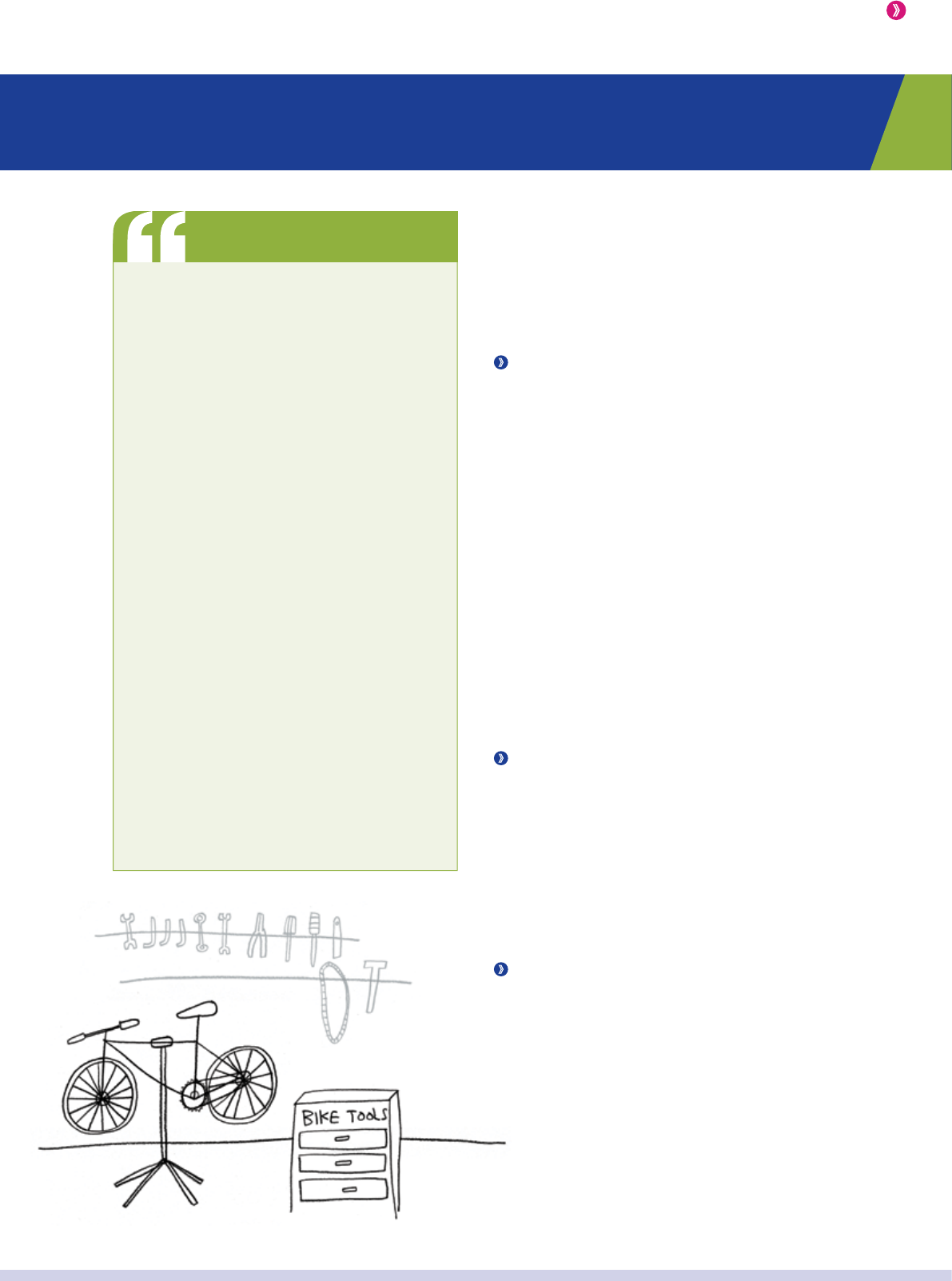
45
Doing Sport Differently
A guide to exercise and fitness for people living with disability or health conditions
I’m deaf, blind and self employed,
running my own cycle repair
and servicing business (www.
cyclesurgery-peterborough.com).
Yes, it is possible for blind people to
do electrical wiring, true buckled bike
wheels and use power tools. I’ve still
got all my fingers and no one has been
electrocuted. I fitted out my workshop
myself – the workbenches, lighting
circuits, powerpoints and tool racks.
I first trained and qualified as a cycle
engineer in 1981. Always having
been a bit of a perfectionist I work to
very high standards. Bikes are road
vehicles and should be safe. It isn’t
just about making a living – it gives me
great satisfaction to be contributing to
the community and doing something
that others value and benefit from.
SPORT TALK
What can I do?
Here are some of the ways you could
help:
Coaching/managing – if you
understand a sport or activity well,
why not bring on the next generation
through coaching? You don’t have to
be able to do it well (though it helps),
you just need to know what’s what.
There are disabled coaches of both
disabled and non-disabled athletes.
If you’re also a good motivator and
tactician you could think about being
a manager. These roles can be very
competitive. After all, there may be
two dozen players in the squad but
there’s only one manager.
Refereeing/umpiring – most sports
are desperate for decent referees
and umpires so if you’re drawn in this
direction, know your stuff and can
cope with the physical and mental
strain of the job, you may well be able
to find an opportunity.
Clubs and committees – sports
administration is complicated and
many find the committee work and
the discussion it involves tedious so if
committees are your thing you could
make yourself popular.
3: On the touchline

46
Doing Sport Differently
A guide to exercise and fitness for people living with disability or health conditions
Volunteering – in addition to the
more formal roles, there are a whole
host of jobs behind the scenes in
sports clubs including making the tea,
driving the mini-bus, washing the kit,
running the league ladders, organising
the socials, fundraising, doing the
accounts, tending the pitch, taking
the photos, building the website. The
list is endless. If you have a skill, your
local sports clubs may well be able to
make use of it.
I have cerebral palsy and use a
wheelchair constantly. I do support a
league team – Middlesbrough – but
I prefer the non-league game. I’m
nearer the action and I find that the
clubs I take an interest in, take an
interest in me as a supporter.
When I was a child Tonbridge Angels
FC started using the school’s facilities
for training and I took the opportunity
to chat to some of the players. I
realised these were just ordinary
blokes who played the game for the
love of it more than for what they could
gain (financially) from it.
I’m now an ardent fan of Steeton AFC
of the West Riding County Amateur
League.
A club at this level needs all the help it
can get and it wasn’t long before the
editor of the club programme roped
me in to write articles and to help
with fund raising. I would now go so
far as to say that many of the staff
and players are among my closest
friends and I was thrilled when a few
years ago I was asked if I would like
to become the club’s Honorary Vice
President, a position I’m proud to hold.
I would advise the disabled fan
wanting to be involved in the game
rather than merely turning up to watch
it, to look to the lower leagues where
your attendance is noted – and ask not
what the club can do for you but what
you can do for the club.
SPORT TALK
These jobs require different levels of
skills and time commitment. Managing,
coaching and officiating require a lot of
both. Some other voluntary roles less so.
There are many jobs that can be done
by anyone in whatever time they have to
give.

47
Doing Sport Differently
A guide to exercise and fitness for people living with disability or health conditions
I remember one night in hospital when
I was around six years old. I was
struggling to cope with not being able
to see very far.
My doctor pointed out of the window
and asked, ‘What can you see there?‘
I looked at the white light I saw in the
distance and replied: ‘The moon’.
The doctor responded: ‘That’s around
250,000 miles away. How far do you
want to see?‘
It was from this point on that I strove to
focus on what I could do, rather than
what I could not do.
I loved sport from a very young age
and come from a sporty family. I found
participating difficult but still wanted to
be involved in other ways. I guess that
I took a rather strange route. I took a
BSc in Social Psychology and an MSc
in Applied Psychology.
I moved into sport when I studied
for my PhD back at Loughborough
University in 2005. This focused
on understanding the nature and
importance of the coach-athlete
relationship and identifying ways in
which it could be maintained.
I’m now a Lecturer in Sport
Psychology at Brunel University. I also
research athlete welfare in sport. For
example, I work with the NSPCC’s
Child Protection in Sport Unit to help
safeguard vulnerable children within
sport. I am also involved in other
projects to promote athlete welfare in
the USA and Japan.
For anyone who has an impairment
and wants to work in sport, I say ‘go
for it!’ Find out what you can do, think
about what you want to do and work
out how you can make it happen. In
fact, due to the technology that is now
available, I would not view myself
as being disabled. I can lecture 300
undergraduates with a PowerPoint
presentation as well as a sighted
person.
SPORT TALK
3: On the touchline

48
Doing Sport Differently
A guide to exercise and fitness for people living with disability or health conditions
How do I get involved?
Think about what you want from
volunteering – new skills, fun, a chance
to contribute – and about what you
have to offer – skills, time and so on.
Get in touch with the sports club or
organisation you want to volunteer for.
They’ll be delighted by your enthusiasm.
Talk to them. Make sure there’s a mutual
understanding of what you want and
what they want and a reasonably close
fit between the two. Don’t be shy about
asking questions.
Although interest in volunteering is
growing, it is often on a short-term
basis, often instead of paid work, so
if you’re in a position to make a long-
term commitment you’ll be particularly
welcome.
If you’re not sure exactly where or
what you want to do, contact your
local volunteer centre or a national
organisation such as:
Volunteering UK
(www.ukvolunteering.org)
Volunteer Scotland
(www.volunteerscotland.org.uk)
Volunteering Wales
(www.volunteering-wales.net)
Volunteer Now in Northern Ireland
(www.volunteernow.co.uk).
I am a wheelchair-user who loves
sport of any kind and will give anything
a go. I throw the javelin and swim
regularly.
I volunteer for Ican2 which helps
disabled children do various sports and
activities including sit skiing, tandem
riding, learning to ride a bicycle or
a tricycle, adapted handbikes, and
go-karts. I love seeing the children
smile doing something new. I have
just qualified as a swimming coach to
disabled people and volunteer at my
local swimming club.
In my area, there are many activities
out there for young disabled people but
not much for those over 18. It would
be nice to be able to do something to
change this state of affairs so that they
don’t feel lost with nowhere to go at 18.
SPORT TALK
In England, the Do-It: volunteering
made easy website – www.do-it.org.uk
– enables you to search by your interest
type (including sport and outdoor
activities) and postcode. The Vinspired
site – www.vinspired.com – offers much
the same facility for 14-25 year olds. You
could also talk to your County Sports
Partnership or the national body of the
sports you’re interested in.
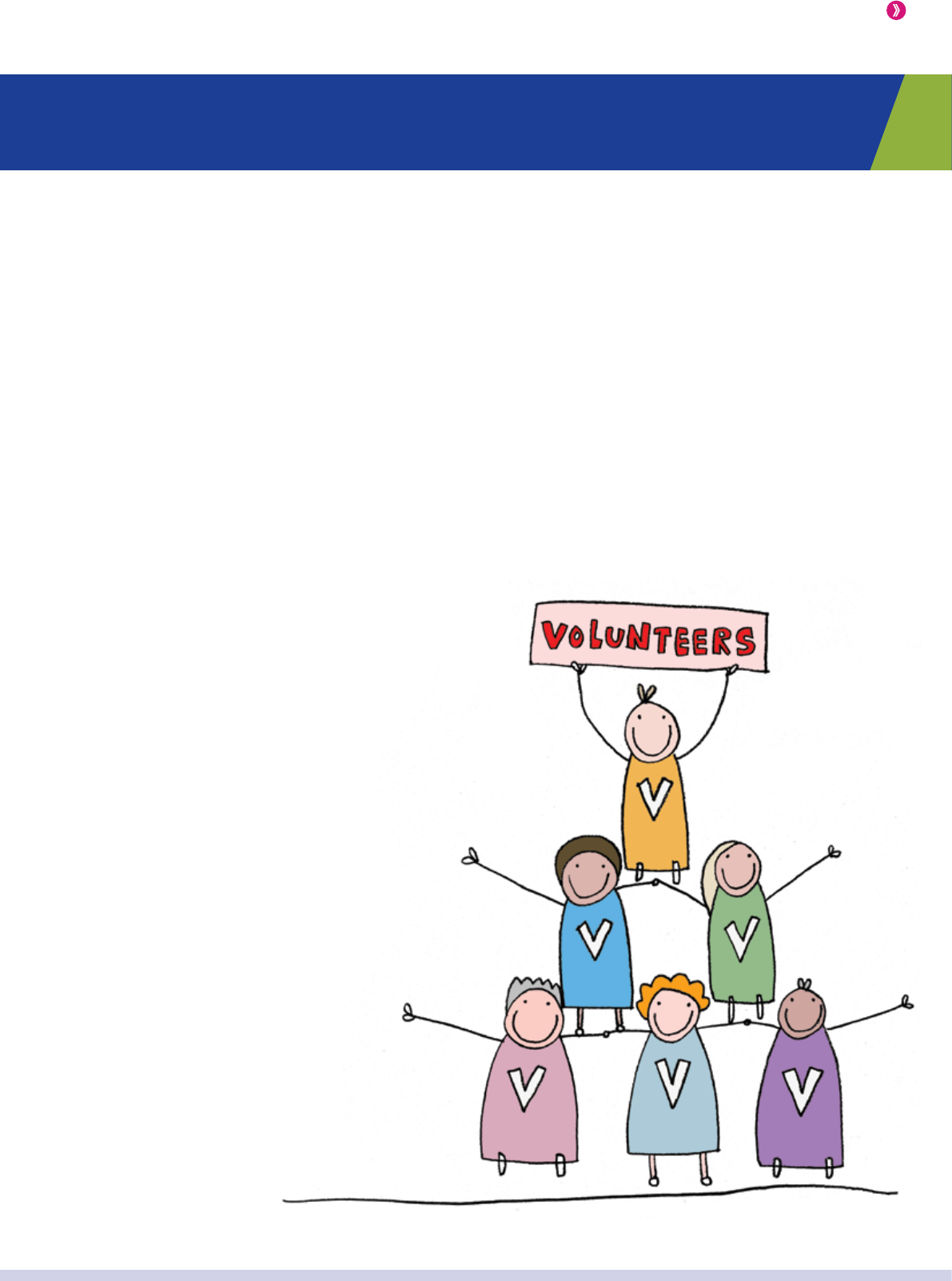
49
Doing Sport Differently
A guide to exercise and fitness for people living with disability or health conditions
Disability sports organisations are
particularly interested in making it easier
for disabled sports fans to volunteer.
For example, the English Federation of
Disability Sport (EFDS) project Inspire to
Lead was run in partnership with Sports
Leaders UK, Youth Sport Trust and
Sport England to increase the number
of disabled people in sports leadership
and volunteering and to identify how
best to support this. The resources they
produced, full of good ideas and good
practice, show what is possible and are
useful reading both for clubs who want
more disabled people involved and for
would-be disabled volunteers.
To encourage younger disabled people
to get involved in officiating, refereeing
and umpiring, the EFDS also ran a Young
Officials scheme.
If you want to train in officiating or
coaching, contact the professional body
for the sport or activity that you’re
interested in. They’ll be able to tell you
what training you’ll need and whether
they have any particular schemes for
disabled people.
3: On the touchline

50
Doing Sport Differently
A guide to exercise and fitness for people living with disability or health conditions
I went to Tottenham Hotspur FC to
watch a junior match for people who
are partially sighted. My impressions
and expectations of partially-sighted
football were completely wrong.
Spurs introduced me to a volunteering
coaching project set up with Haringey
Mencap called The Spurs Project:
Sport for People Under Represented in
Society.
I was blown away by the positivity in
and around the project and instantly
became a volunteer. Along with being
a coach I was also able to learn more
about being a support worker within
Haringey Mencap. I went on to work
full time within the day centre as a
support worker and eventually to
become a service manager.
I really enjoyed my time working on the
project because it was able to teach
me more about working with disabled
people on a daily basis but also it
taught me that I had certain skills that
I was not aware of and that I was
looking to develop.
Through this work I really found myself
and also regained my confidence
as a person and a sportsman. I got
the opportunity to gain a number of
qualification, in football, community
leadership and working with disabled
people.
Now as Senior Inclusion Projects
Officer I’m a full time member of
staff in the Disability and Inclusion
Department at the Tottenham Hotspur
Foundation.
To other disabled people who want to
work in sport, I would say be open to
volunteering because it can always
lead to a positive. It can allow you to
find out if you have an interest in a
certain area of work and can provide
valuable experiences.
Being visually impaired hasn’t made
me a better coach but it has made
me more aware of people’s needs
and I make sure that I am even
more prepared and organised when
delivering a sports session.
Sport is a fantastic motivator and is
a vehicle to provide opportunities
for people to develop. It can provide
opportunities for individuals to learn,
exercise, access qualifications,
socialise and build on existing skills.
The skills that I have developed
through sport are completely
transferable into everyday life and any
working environment.
SPORT TALK

51
Doing Sport Differently
A guide to exercise and fitness for people living with disability or health conditions
4: Watching
Your guide to accessible spectating
Spectating is one of the easiest ways to
get involved in sport. Enjoy it – and who
knows, watching may inspire you to have
a go yourself.
The Olympic ideal – swifter, higher,
stronger – is easy to understand but
living up to it is harder. The same is
true off the field. The Olympic ideal for
access – 1% of capacity for wheelchair-
users, 1% for ambulant disabled people
– is easy to understand but outside of
purpose-built Olympic venues, achieving
it remains a challenge.
Having said that, the UK’s sports
grounds are becoming more accessible.
Not as quickly as we might like but it
is happening. Some older stadia are
difficult to adapt but things are changing
in the newer grounds and the sporting
authorities are beginning to understand
the issues around access. Generally six
groups are targeted:
wheelchair users
people with limited mobility
people with visual impairments
people with hearing impairments
people with learning difficulties
people with a psychological condition
or mental health conditions
To take the national sport of football
as an example, European football’s
governing body UEFA estimate that half
a million disabled football fans attend
matches in Europe. UEFA’s guide ‘Access
For All’ embraces the social model of
disability and covers everything from
access to the ground to access to the
hot dogs. It recommends access audits,
consultation, disability officers and clear
mission statements.
The guide points out that this is not
an issue that concerns only disabled
people since ‘research has shown that
the actual percentage of people who
require accessible infrastructure exceeds
20% at any given time’. This includes
people with injuries (supporters, staff
and players), pregnant women, children,
older volunteers and supporters,
shorter people, people not familiar
with the local language and first-aiders
and emergency services. That’s a lot of
potential users.
If you do encounter the increasingly rare
club that thinks disability access is not
worth the effort, it might be a good idea
to show them this list.
4: Watching

52
Doing Sport Differently
A guide to exercise and fitness for people living with disability or health conditions
Generally, the newer the stadium the
better the access. So, of the top football
clubs, access at Arsenal and Manchester
City or the new Wembley, for example,
is better than at Manchester United or
Chelsea. But don’t take anything for
granted, even with new stadia.
How do I know if my team’s
ground is accessible?
If you’re a disabled spectator you’ll
want to find out about Level-Playing
Field (www.levelplayingfield.org.
uk), the national charity representing
disabled fans of all sports in England
and Wales formerly known as the
National Association of Disabled
Supporters. They began as a football
supporters organisation but now cover
all sports. Their website includes access
information on many grounds including
most football clubs.
In the UK, there are several laws relating
to sports grounds and access and at
the time of writing there was a further
sports grounds safety bill going through
parliament.
The current legislation is brought
together in ‘Accessible Stadia: A
good practice guide to the design of
facilities to meet the needs of disabled
spectators and other users’. (Although
this guide was put together by the
football industry, it is referred to as
the guidance document for all sports
facilities in Approved Document M, the
government’s building regulations on
access to and use of buildings.)
It includes guidance on, for example,
the number of wheelchair spaces. The
current minimum is six for a stadium
under 10,000 capacity going up to 210
plus 2 per 1,000 for a capacity above
40,000 (so, the new Wembley stadium,
for example, has 310 wheelchair places
and associated carer seats for a capacity
of 90,000). But, of course, it not just
about wheelchairs. Gary Deards of
Level-Playing Field says: ‘there should
be as much ambulant disabled access
as wheelchair access. Ideally, you should
be able to sit where you want without
too many stairs and/or with a personal
assistant or guide dog or whatever you
need with you.’
If you don’t think your particular needs
are being met at the sports grounds you
visit, it’s worth having a look at the guide
and seeing what the relevant targets are.
However, the key point as far as this
guide is concerned is that under the
equality legislation, sports grounds
and stadia need to be as accessible
as possible and to make ‘reasonable
adjustments’ to ensure this.

53
Doing Sport Differently
A guide to exercise and fitness for people living with disability or health conditions
Currently, there is room for
improvement. In February 2011, Level-
Playing Field (then called the National
Association of Disabled Supporters)
told the Culture, Media and Sport
Committee of the House of Commons
inquiry into football governance that of
the 92 professional football clubs in the
top four divisions:
13 provided the minimum
recommended numbers of
wheelchair user spaces and amenity
seats
37 enabled disabled away fans to sit
with their own supporters
21 provided a full audio described
commentary service for visually-
impaired fans
poor sightlines in disabled seating
areas were commonplace with views
often completely blocked
few offered shelter from the rain in
the designated areas
accessible parking and amenities were
often poor or nonexistent
Most sports grounds are trying to
improve. The vast majority of football,
rugby and cricket grounds are not filled
to capacity every week and clubs want
as many supporters as they can get.
According to Level-Playing Field, rugby
league and horse racing are two sports
that have a particularly open attitude on
access and are keen to improve. Cricket,
like an express fast bowler, is also making
great strides.
But what is available and to whom varies
enormously. Do your homework before
setting out. Contact the club in advance
and find out exactly what they offer. Ask
about ticket prices for you and, if you
need one, for a personal assistant to
accompany you. Speak to the disability
liaison officer if they have one. Also
contact the supporters club and/or
disabled supporters club if there is one.
If you’re travelling to an unfamiliar part
of the country, the local organisation of
disabled people might be able to help too.
How can I help my club do
better on access?
Do your own access audit and report
back.
Then encourage them to have a
professional access audit. An access
auditor can tell them what they need to
do to make their ground more accessible
and how to do it most cost-effectively.
Make sure the auditor is registered
with the National Register of Access
Consultants (NRAC), an independent
register of accredited Access Auditors
and Access Consultants who meet
professional standards and criteria
established by a peer review system.
This is not expensive. Level Playing Field
amongst others can arrange effective
NRAC audits within the budget of all but
the tiniest club.
4: Watching

54
Doing Sport Differently
A guide to exercise and fitness for people living with disability or health conditions
I’m a person who is totally blind, I
follow Watford and Manchester City.
I didn’t renew my Watford season
ticket this year as they’ve effectively
quadrupled the price for blind fans.
True, it was low before but now it’s
the same price as for fully sighted
fans. Money’s tight and you need to
prioritise.
The club is better than some and
worse than others. Like about 25
other clubs, they provide an audio
commentary via the Soccer Sight
project. Although it’s now finished, this
project helped establish a dedicated
commentary with headsets that can
be used anywhere in the ground. I can
also get BBC so sometimes I have one
ear listening to one and one listening
to the other.
Some commentators are really good;
others waffle on about all sorts.
Sometimes the pitch-side effects mike
is too loud – you don’t need that if
you’re actually in the ground.
The best club I’ve been to in the last 15
years or so as a blind fan is Norwich.
They give you everything when you
arrive at the turnstile, so you don’t
have to go back and forth for headsets
and audio programmes and so on.
Ipswich is good too because they
have a disabled liaison officer who is
disabled himself so understands the
problems we encounter. That makes a
real difference. Arsenal was good as
well.
I can’t pretend there aren’t problems
sometimes with very few clubs using
alternative formats for providing info
etc for their blind fans. Chelsea was
terrible considering the amount of
money that has been pumped into the
club. The stewards didn’t even know
what a white stick was.
But the atmosphere and friendship is
still great, even at the smaller clubs
where they have more time for you.
My advice to blind people hesitating
about going to football is go. There’s
no real danger. The other team’s fans
may give you some banter over the
team you are supporting, but they will
normally look after you if you need
help. I’ve never had a remark about my
impairment, just the colour of my shirt.
The more of us who go to games,
the better the clubs will become at
understanding what we need.
SPORT TALK

55
Doing Sport Differently
A guide to exercise and fitness for people living with disability or health conditions
Kick it Out, the campaign against
discrimination in football which began
with racism, now has an Equality
Standard that encompasses six areas
of diversity: race, religion, age, gender,
disability and sexual orientation.
There are three levels of compliance –
preliminary, intermediate and advanced
– and to meet even the preliminary
level, clubs must commission an
external disability access audit using the
Accessible Stadia document mentioned
on page 52.
But that’s only the first stage. To
meet the Advanced level – and only
Arsenal have so far done this – clubs
need to implement the auditor’s
recommendations.
Encourage your club to share access
information: a page on the website
is easy to do and can make a big
difference, a leaflet or booklet for
people booking tickets, information for
away fans. Often away teams sell tickets
with no idea of the access arrangements
at the home team’s ground.
Encourage your club to do the little
things that can make a big difference
such as being flexible about where
people sit or using their existing
audio-visual facilities as much as
possible. Announcing substitutions/
replacements, goals/tries/wickets,
bookings/expulsions and other
information both on the PA and on
the screens in the ground doesn’t just
help spectators with visual or hearing
impairments but also those who have
popped out to the toilet, are temporarily
unsighted or don’t recognise your
team’s exciting new Brazilian signing.
Record the match programme and make
it available on CD (from the programme
sellers) or as an mp3 on the club
website. Doing this professionally will
only cost a couple of hundred pounds
but you can probably find a fan who will
do it for next to nothing.
Ask the manager and players to give up
five minutes to read their contributions.
No studios are needed. Modern
technology means they can record
themselves on their mobile phones.
Again it’s not only partially-sighted fans
who benefit. All those people driving
home in their cars after the match can
listen to the match programme.
Time and again disabled spectators told
us that the single thing that would make
the biggest difference was better staff
training. Understanding the issues makes
it far easier for stewards and other
staff to respond appropriately. Clubs
with well-trained disability-aware staff
don’t need to think of every possible
eventuality in relation to every possible
impairment in advance because they can
be confident that their staff can respond
intelligently to any situation in the
interests of both club and supporter.
4: Watching

56
Doing Sport Differently
A guide to exercise and fitness for people living with disability or health conditions
Can I be turned away?
As far as spectators are concerned,
most sports clubs are not associations.
If the general public is able to enter a
sports ground to spectate then a service
is being provided and it should be
accessible to everybody with ‘reasonable
adjustments’ made if necessary. It
doesn’t matter if entry is paid or free.
Use your common sense. If you’re
going to a ground that you’re not
familiar with, consider contacting them
in advance if you will need specific
adjustments. This makes ‘reasonable
adjustments’ possible. The organisers
are far less likely to be able to help if
you turn up unannounced five minutes
before the start, especially if you have a
particular need they’re not used to.
Take into consideration the resources
of the club you’re dealing with. It’s
perfectly reasonable to expect to be
able to get into flagship stadia like the
Olympic stadia, Wimbledon, Lords or
Twickenham but smaller clubs, especially
non-professional ones, often have to
make do with what little they’ve got and
that includes the supporters. You might
have ideas for how they can improve
even with limited resources.
Could a club with a
non-accessible ground be
taken to court?
In theory, yes. The Equality Act is clear
and it would be difficult for some of our
bigger sports clubs to argue that they
couldn’t afford to make the adjustments.
As Gary Deards of Level-Playing Field
puts it: ‘everybody has issued guidance
and every club knows what to do, it’s
now a question of doing it.’ (You can
find much of that guidance at:
www.levelplayingfield.org.uk/Football-
Authorities-Guidance.aspx).
However, fans are reluctant to take
their teams to court. Confidentiality
agreements have been used in out-of-
court settlements. But, if a club were
taken to court, it could set a precedent
that could revolutionise access to sports
grounds. Watch this space.
I’ve been going to sports grounds,
football, cricket and rugby, for a long
time and I remember how following the
recommendation of the Taylor Report,
set up after the Hillsborough Disaster
in 1989, many grounds became
all-seater or mainly seated almost
overnight. Why can’t they do the same
on disability access?
SPORT TALK

57
Doing Sport Differently
A guide to exercise and fitness for people living with disability or health conditions
I hold a season ticket at Arsenal
because for a disabled fan – I’m a
wheelchair user – Arsenal is the best
ground by far. Lifts galore. Loads
of different viewing spaces for
wheelchair and visual and ambulant
disabled people. Commentary for blind
people. One of my carers is a Arsenal
fan so it combines football, best mate
and sometimes beers!
At Arsenal I have no barriers. But
were I not a season ticket holder there
are only a limited amount of disabled
wheelchair spaces for each game. I
would go into some form of ballot if
applying for a game. This happens for
away matches. Football clubs have
limited wheelchair spaces, especially
older grounds and at some grounds
there are only a handful of spaces
for away wheelchair users. When
applying, the tickets go to those fans
with most credits.
I am also an England Fan member
and whilst getting tickets for home
internationals is easy, travelling away
to remote countries requires masses
of planning and luck.
A major problem for disabled England
fans is the need to make a phone call
to book tickets. Non-disabled fans can
use the internet. Why? Better use of
the internet, especially for ticketing
would really improve things for
disabled fans.
Overcome barriers by learning the
system. If I want credits for tickets for
cup games I have to go to 3-4 away
games per season for three seasons
running. So I strategically pick grounds
that are nearby. I also utilise my
carers and direct payments to fund
my independence at matches. Often
a carer will work for free on the basis
of their match day ticket being paid/
subsidised.
More disabled parking would make
a big difference. But my advice to
would-be fans is just get on with it –
you won’t know whether you like it
until you try it. Ring clubs. Ask how
to go about it – they are very helpful
usually.
SPORT TALK
4: Watching

58
Doing Sport Differently
A guide to exercise and fitness for people living with disability or health conditions
5: Who can help?
Information, advice and further support
A good place to start locally is your
library or council leisure or social
services department. You’ll also find
the national sporting bodies will help if
they can. However, there are so many
possibilities, we can list only a fraction of
them here. If you can’t find what you’re
looking for, have a good look online.
You’ll be surprised how much is out
there.
General starting points
Sport England
Address: 3rd Floor Victoria House,
Bloomsbury Square,
London WC1B 4SE
Tel: 08458 508508
Web: www.sportengland.org
www.activeplaces.com
Sport England directory including
information on over 50,000 facilities.
Sport Scotland
Address: Doges, Templeton on
the Green, 62 Templeton
Street Glasgow G40 1DA
Tel: 0141 534 6500
Web: www.sportscotland.org.uk
Sport Wales
Address: Sophia Gardens,
Cardiff CF11 9SW
Tel: 0845 045 0904
Web: www.sportwales.org.uk
Sport Northern Ireland
Address: House of Sport,
2a Upper Malone Road,
Belfast BT9 5LA
Tel: 028 9038 1222
Web: www.sportni.net
English Federation of
Disability Sport (EFDS)
Address: SportPark, Loughborough
University, 3 Oakwood
Drive, Loughborough,
Leicestershire LE11 3QF
Tel: 01509 227750
Web: www.efds.co.uk
Website includes link to Inclusive Fitness
Initiative database of accessible gyms
and facilities (or call 0114 2572060 –
add prefix 18001 for Typetalk).
EFDS also host Disability Sport Events –
www.disabilitysport.org.uk

59
Doing Sport Differently
A guide to exercise and fitness for people living with disability or health conditions
Disability Sports Wales
Address: Sport Wales National
Centre, Sophia Gardens,
Cardiff CF11 9SW
Tel: 0845 846 0021
Web: www.fdsw.org.uk
Scottish Disability Sport
Address: Caledonia House, South
Gyle, Edinburgh EH12
9DQ
Tel: 0131 317 1130
Web: www.scottishdisabilitysport.com
Disability Sports NI
Address: Adelaide House, Falcon Rd
Belfast BT12 6SJ
Tel: 028 9038 7062
Textphone: 028 9038 7064
Web: www.dsni.co.uk
Other useful general websites
England’s County Sports
Partnerships
Web: www.cspnetwork.org
Parasport
Web: www.parasport.org.uk
If you want to get into paralympic
sports, this is the place to start.
(Also Ability v Ability – for schools)
Web: www.abilityvability.co.uk
Federation of Disability Sports
Organisations in Yorkshire and Humber
Web: www.fdso.co.uk
Interactive
Web: www.interactive.uk.net
Lead strategic development agency for
sport and physical activity for disabled
people in London.
Get Active London
Web: www.getactivelondon.co.uk
Search site for all Londoners which
provides details on the inclusivity of the
activities it lists.
Ableize
Web: www.ableize.com/
recreation-sports
Sports section of disability resources site
run by disabled people.
Direct Enquiries
Web: www.directenquiries.com
Online access guide including sports
facilities.
Disabled Go
Web: www.disabledgo.com
Online access guide including sports
facilities.
Youth Sport Trust
Web: www.youthsporttrust.org
Run many programmes promoting sport
and volunteering.
5: Who can help
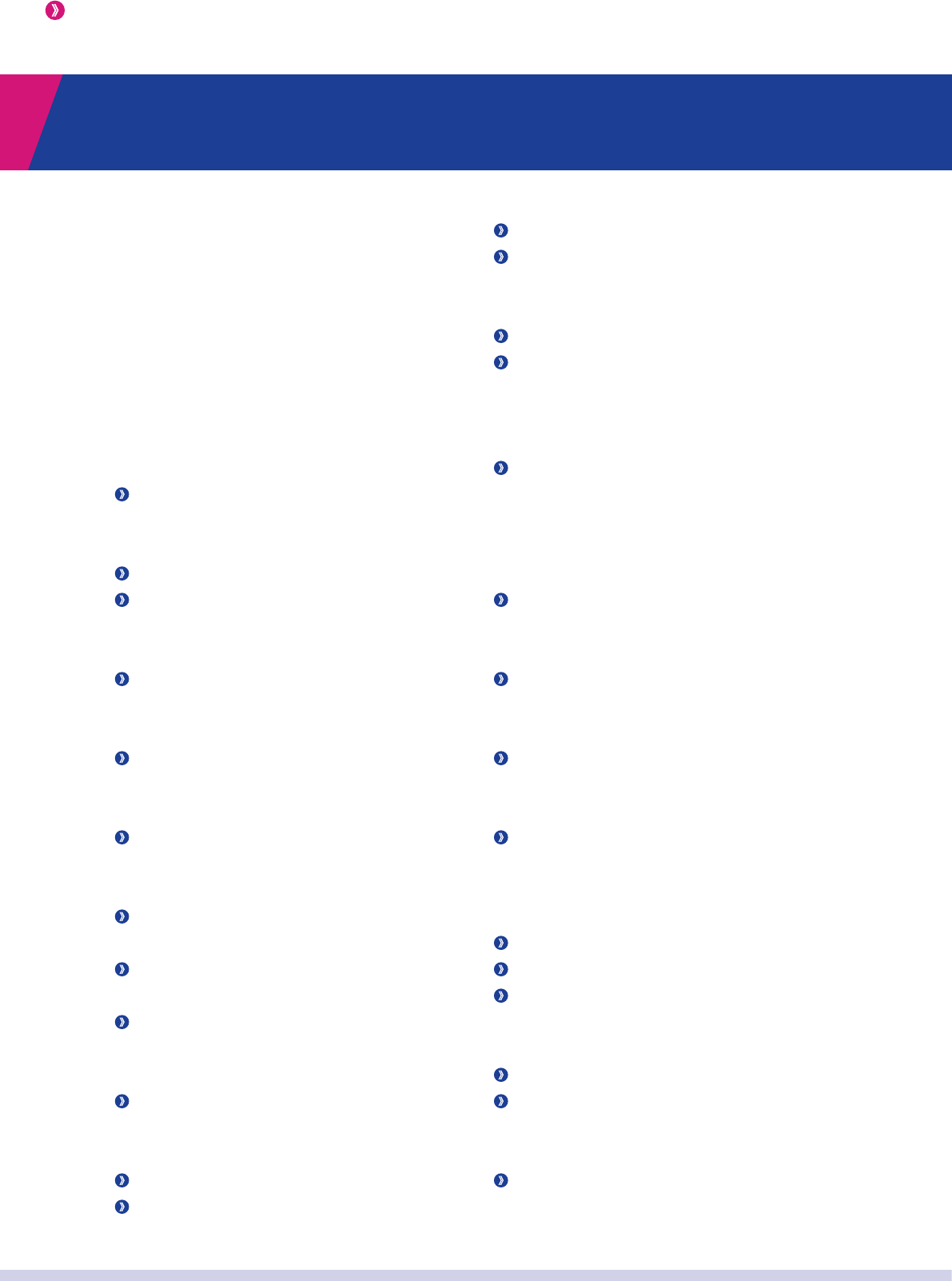
60
Doing Sport Differently
A guide to exercise and fitness for people living with disability or health conditions
Organisations for
particular sports
We can’t list every sport here so we’ve
tried to include those mentioned in the
guide and/or particularly popular with
disabled people.
Angling
www.bdaa.co.uk
Archery
www.archerygb.org
www.british-wheelchair-archery.org.uk
Athletics
www.uka.org.uk/
Badminton
www.badmintonengland.co.uk
Boccia
www.gb-boccia.org
Cricket
www.ecb.co.uk/development/
disability-cricket
www.cfpd.org.uk (Cricket Federation
for People with Disabilities)
www.cricketdeafengland.co.uk
Croquet
www.croquet.org.uk
Cycling
www.britishcycling.org.uk/disability
www.handcyclinguk.org.uk
www.ctc.org.uk
www.companioncycling.org.uk
Equestrian
www.rda.org.uk
www.britishdressage.co.uk/para_
equestrian
Football
www.thefa.com/TheFA/
WhatWeDo/Equality/
DisabilityFootball
Goalball
www.goalballuk.com/
Golf
www.disabledgolfsociety.com/
Netball
www.englandnetball.co.uk/
Rowing
www.britishrowing.org/taking-part/
adaptive
Running bikes
www.racerunning.org
www.acerr.org
www.rrscotland.org
Sailing
www.rya.org.uk/sailability
www.jst.org.uk
Shooting
www.dtsgb.org.uk (Disability Target
Shooting Great Britain)

61
Doing Sport Differently
A guide to exercise and fitness for people living with disability or health conditions
Sledge hockey
www.sledgehockey.co.uk
Snow sports
www.disabilitysnowsport.org.uk/
Swimming
www.swimming.org/
britishswimming/disability-swimming
www.swimming.org/bigsplash
Table tennis
www.etta.co.uk/our-sport-modules/
table-tennis-for-people-with-
disabilities/
Tennis
www.tennisfoundation.org.uk/
disabilitytennis/
Volleyball
www.volleyballengland.org/
getintovolleyball
Walking
www.disabledramblers.co.uk
www.getwalking.org – section for
‘people with disabilities’
Wheelchair basketball
www.gbwba.org.uk/gbwba
www.iwbf.org
Wheelchair curling
myweb.tiscali.co.uk/bwcca/
Wheelchair rugby
www.gbwr.org.uk
Organisations for people
with particular impairments
Back Up
www.backuptrust.org.uk
For people with spinal cord injury.
British Amputee & Les Autres
Sports Association
sites.google.com/a/balasa.org.uk/
main
British Blind Sport
www.britishblindsport.org.uk/
Cerebral Palsy Sport
www.cpsport.org/
Dwarf Sports Association
www.dsauk.org
Extremity Games
www.extremitygames.com/
Adaptive sports competition, similar
to the X Games, for athletes with
amputations and limb differences.
Mencap Sport
www.mencap.org.uk/sport
Metro
metroblindsport.org
London based club for blind and partially
sighted people.
Special Olympics
www.specialolympicsgb.org.uk
5: Who can help
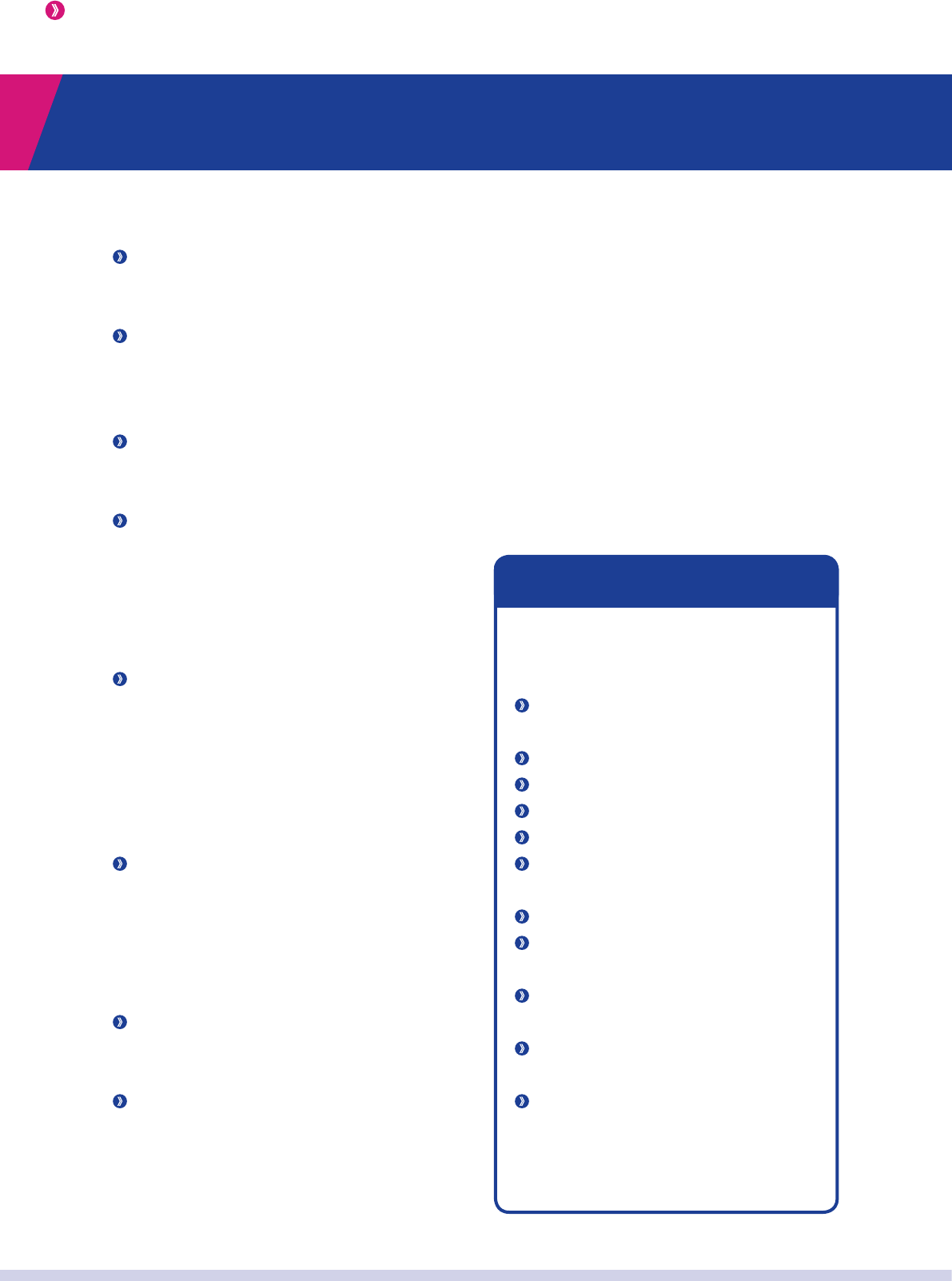
62
Doing Sport Differently
A guide to exercise and fitness for people living with disability or health conditions
Transplant Sport UK
www.transplantsport.org.uk
UK Deaf Sport
www.ukdeafsport.org.uk
UK Sports Association for People
with Learning Disability
www.uksportsassociation.org
Inas
www.inas.org
The International Federation for sport
for para-athletes with an intellectual
disability.
Wheelpower
www.wheelpower.org.uk
National charity for wheelchair sport.
Spectating
Level Playing Field
www.levelplayingfield.org.uk
Formerly the National Association of
Disabled Supporters.
Centre for Access to Football in
Europe
www.cafefootball.eu
UEFA
uefa.com
(download Access For All V1.0 here:
tinyurl.com/uefaaccess)
Experts advise that you should
see your GP before starting a new
exercise programme if you:
Have not done any exercise for
10 years or more
Are over 40
Have a heart problem
Have high or low blood pressure
Have joint problems
Take painkillers or any other
drugs regularly
Have back problems
Are very overweight or very
underweight
Are prone to headaches,
fainting or dizziness
Have a resting heart rate that
exceeds 100 beats a minute
Have any other medical
condition which could interfere
with your taking part in an
exercise programme
›› Health warning

Doing Sport Differently
A guide to exercise and fitness for people living with disability or health conditions
Disability Rights UK has arrived – the merger of The Royal
Association for Disability Rights (Radar), the National Centre
for Independent Living (NCIL) and Disability Alliance (DA)
took place on 1st January. This will enable us to offer all the
services and campaigns we did before – and more. Our vision
is a society where all disabled people can participate equally as
full citizens.
Doing Sport Differently – a guide to exercise and fitness for
people living with disability or health conditions.
Written by Jim Pollard at notonlywor[email protected]
Designed by Chris Jewell at chris@jewelldesign.co.uk
Illustration by Craig Shuttlewood at www.shuttlewood.me
Project Managed by Nathan Jelf-Mannion at
Project Board
Chaired by Baroness Grey-Thompson DBE
Sue Baker, Time to Change
Alun Francis, Arsenal Football Club
Phil Friend, Disability Rights UK
Nick Heyworth, Parasport
Chris Holmes, LOCOG
Nathan Jelf-Mannion, Disability Rights UK
Ben Kersey, Disability Rights UK
Stewart Lucas, Interactive
Tracey McCillen, UK Sports Association
Tracey Proudlock, Equality 2025
Liz Sayce, Disability Rights UK
Rebecca Whittle, Visa Europe
Thanks to all the people with lived experience of disability
or health conditions and Disability Rights UK members who
helped write this guide. With special thanks to our sole sponsor
Visa, and the project board.
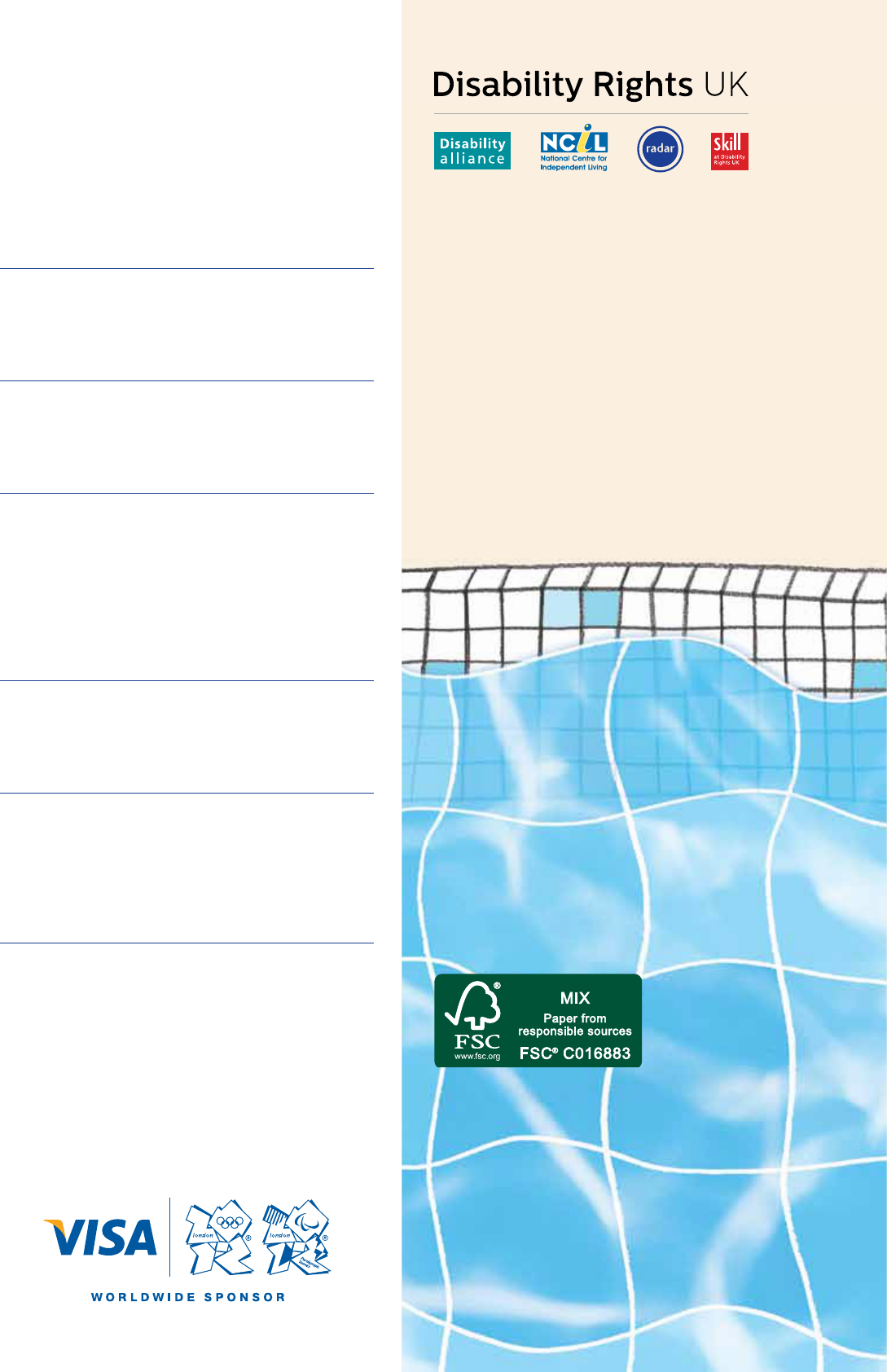
Doing Sport Differently – a guide to
exercise and fitness written by and for
people living with disability or health
conditions. Some positive messages
within:
‘I like simply walking – the fresh air,
sunshine and exercise…’
‘Once I’m on my cycle, I can go as far or
as fast anyone else.’
‘Doing sport challenges pre-
conceptions about what disabled
people can and can’t do better than
almost any activity I can think of.’
‘Sport has boosted my confidence and
opened up a whole new world.’
‘Once you start you can’t stop. I never
knew I could do all these things. I never
knew they could make me feel so good.’
This product is
100% recyclable.
© Disability Rights UK
Charity number: 1138585
Disability Rights UK would like to thank
Visa, sole sponsor of Doing Sport Differently
12 City Forum,
250 City Road,
London EC1V 8AF
Web: www.disabilityrightsuk.org
Tel: 020 7250 3222
Fax: 020 7250 0212
Textphone: 18001 020 7250 4119
Email: feedbac[email protected]g
